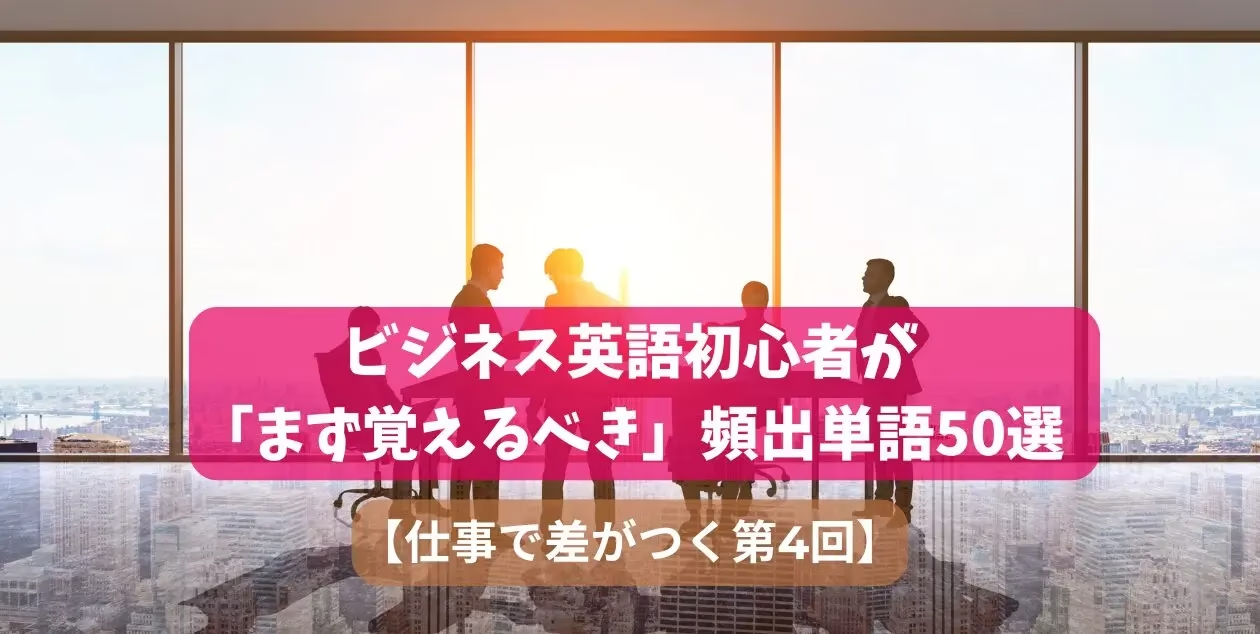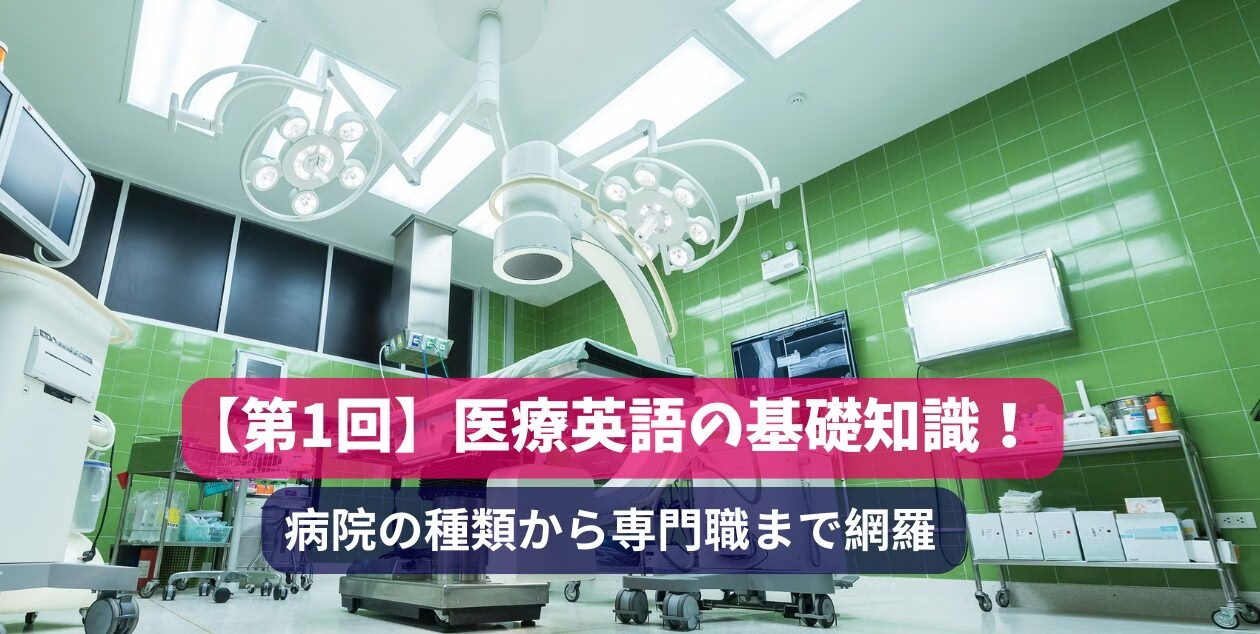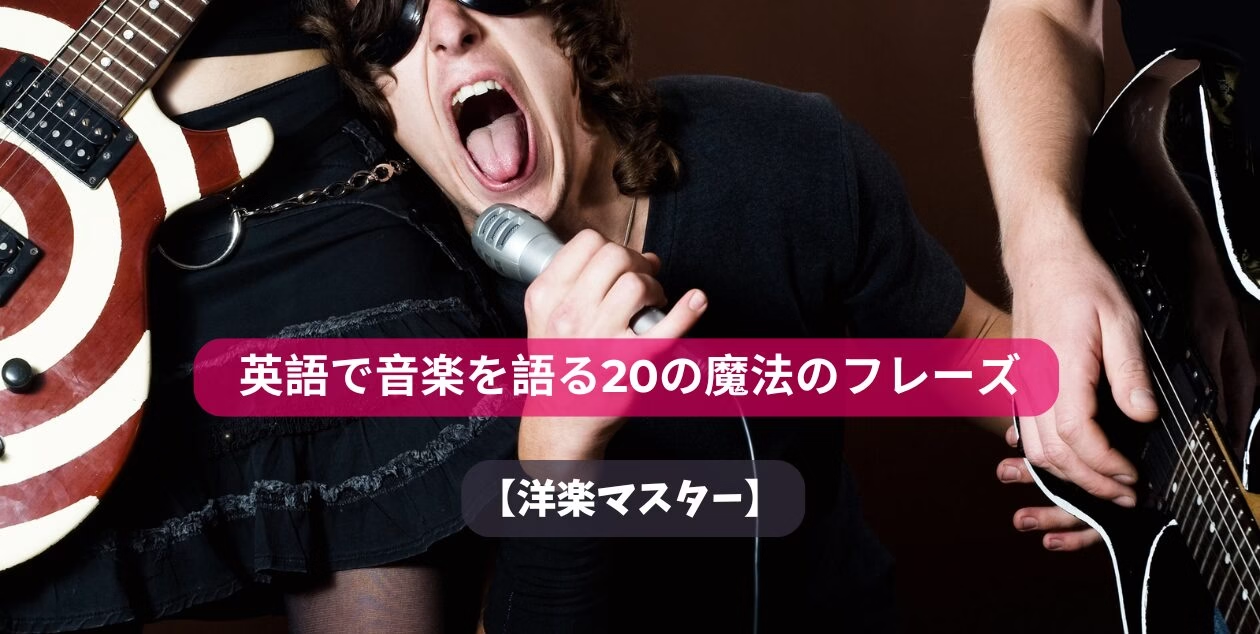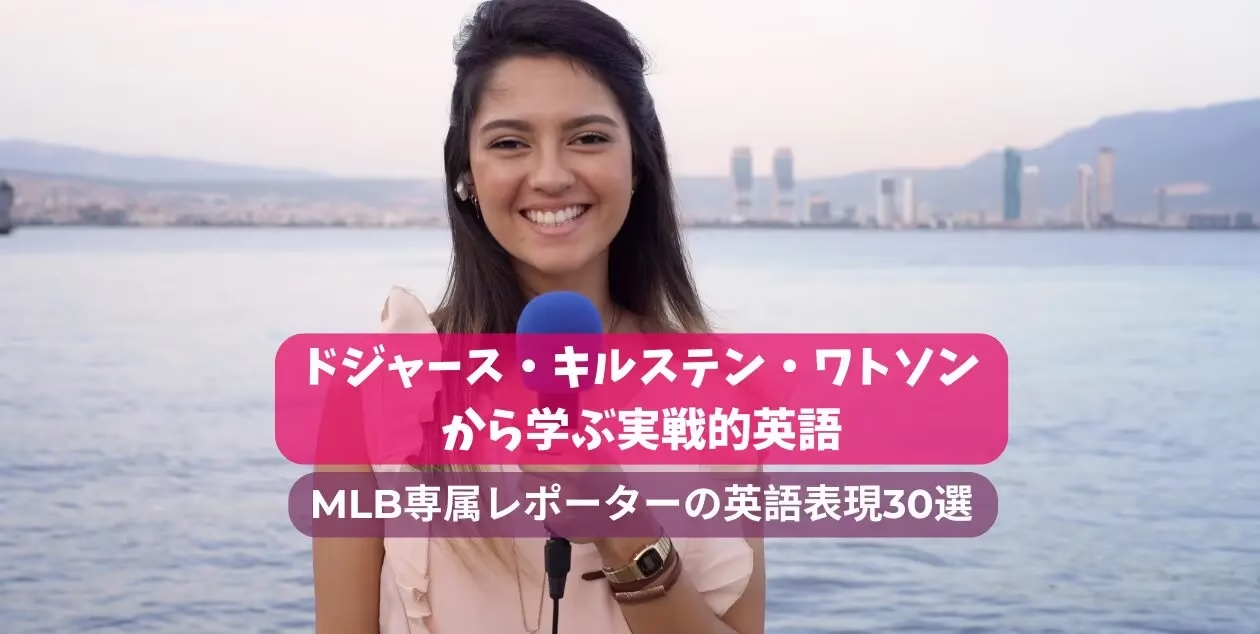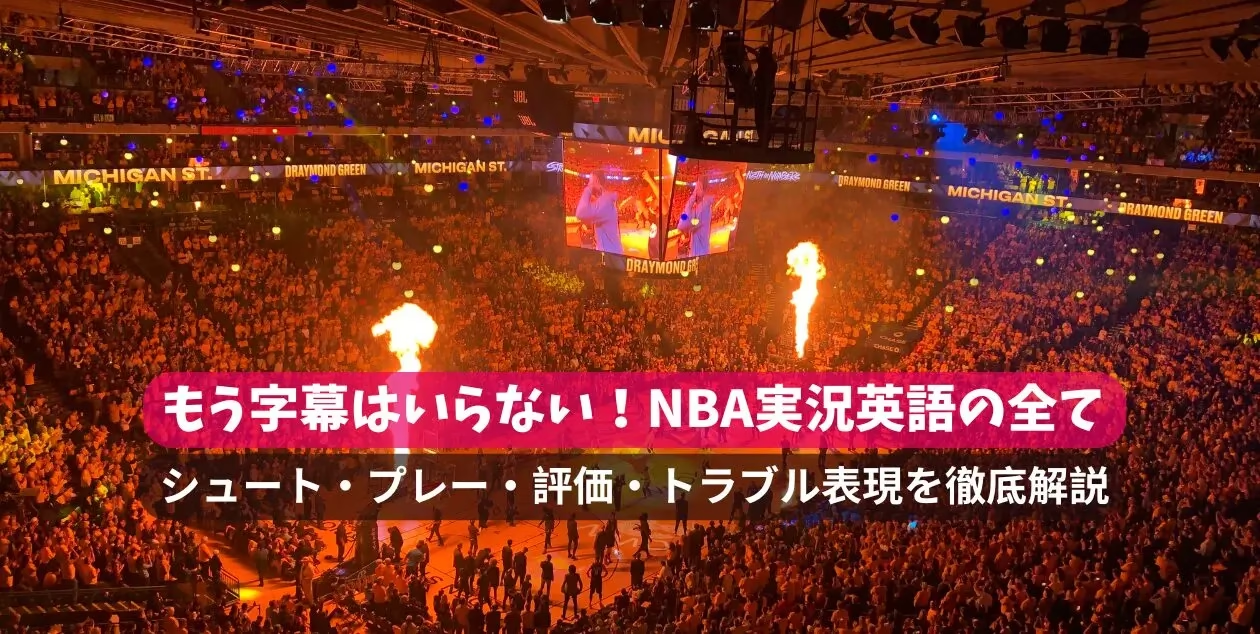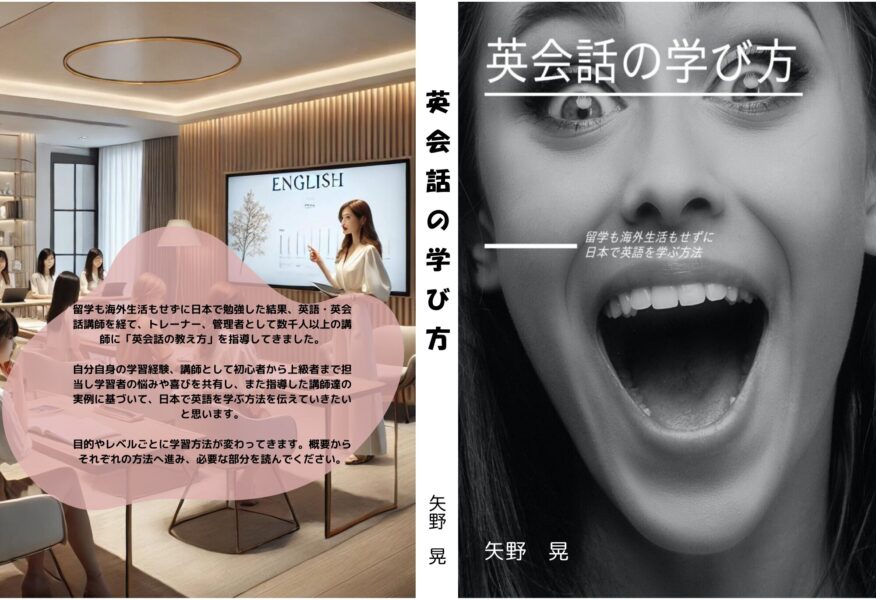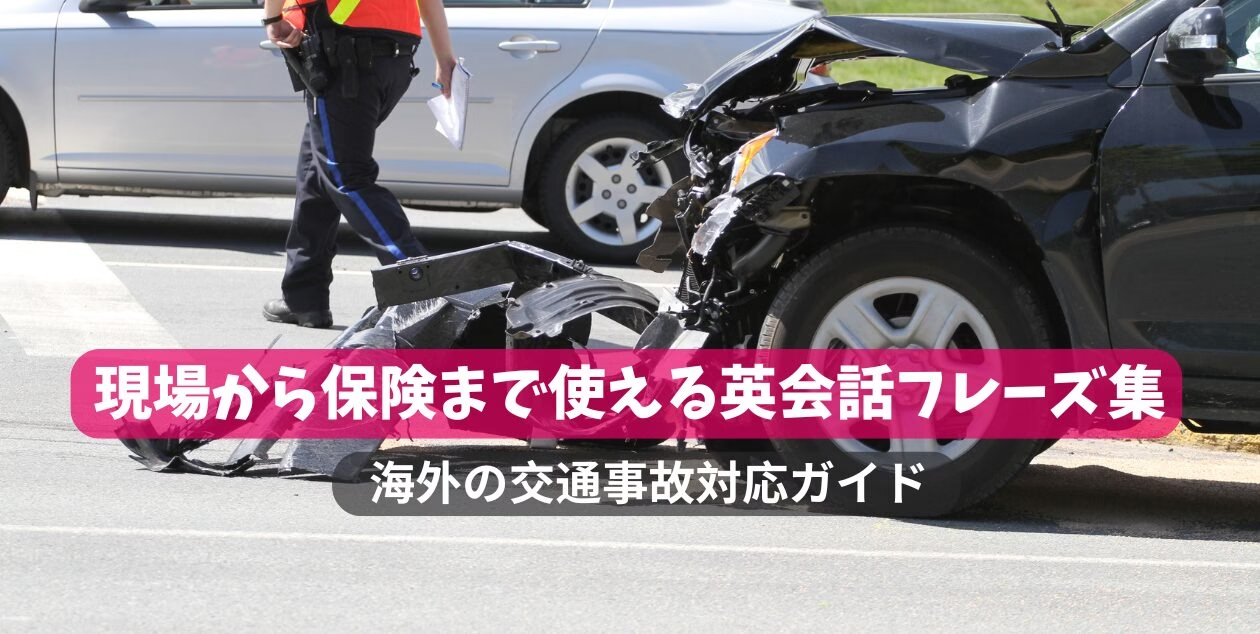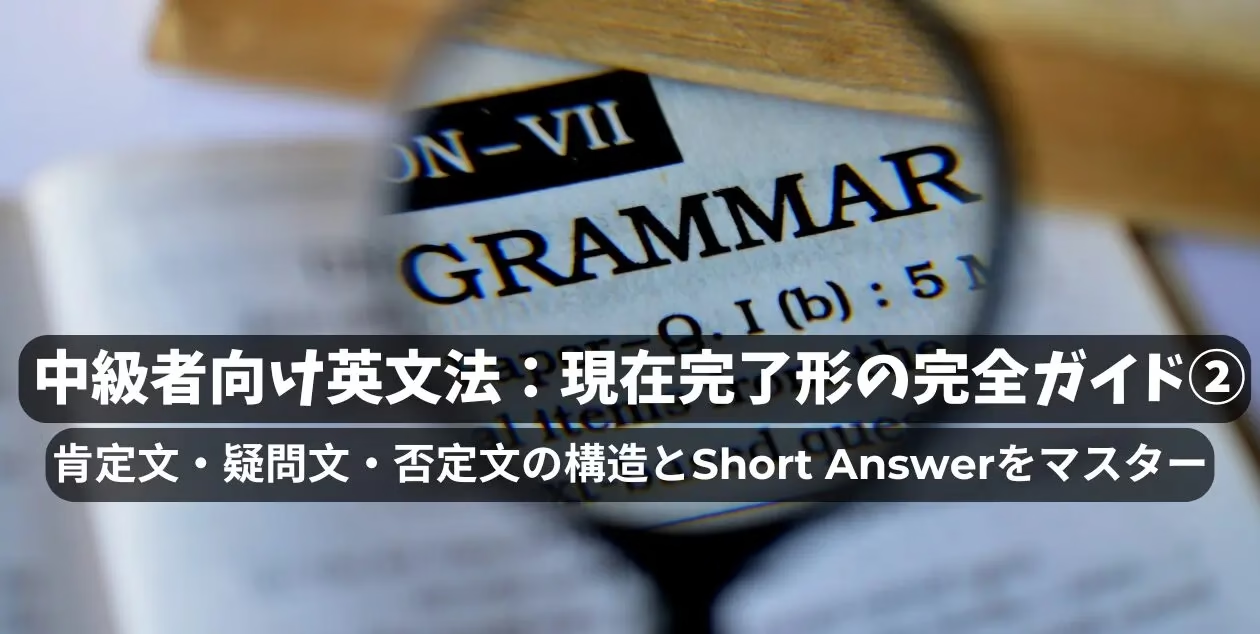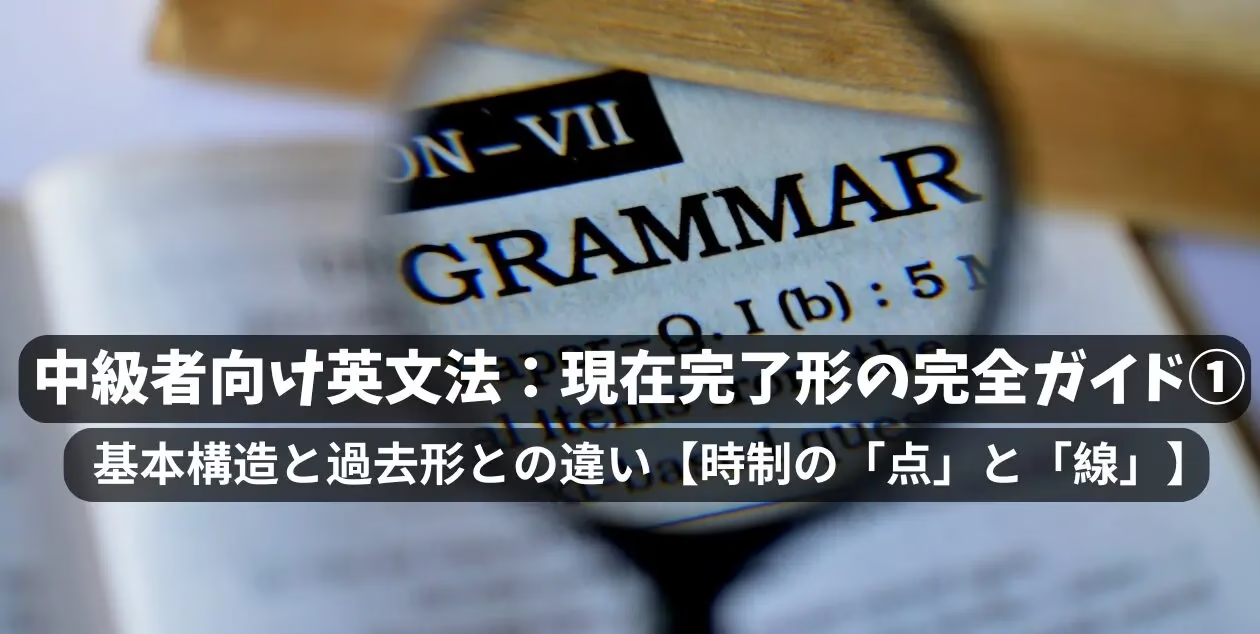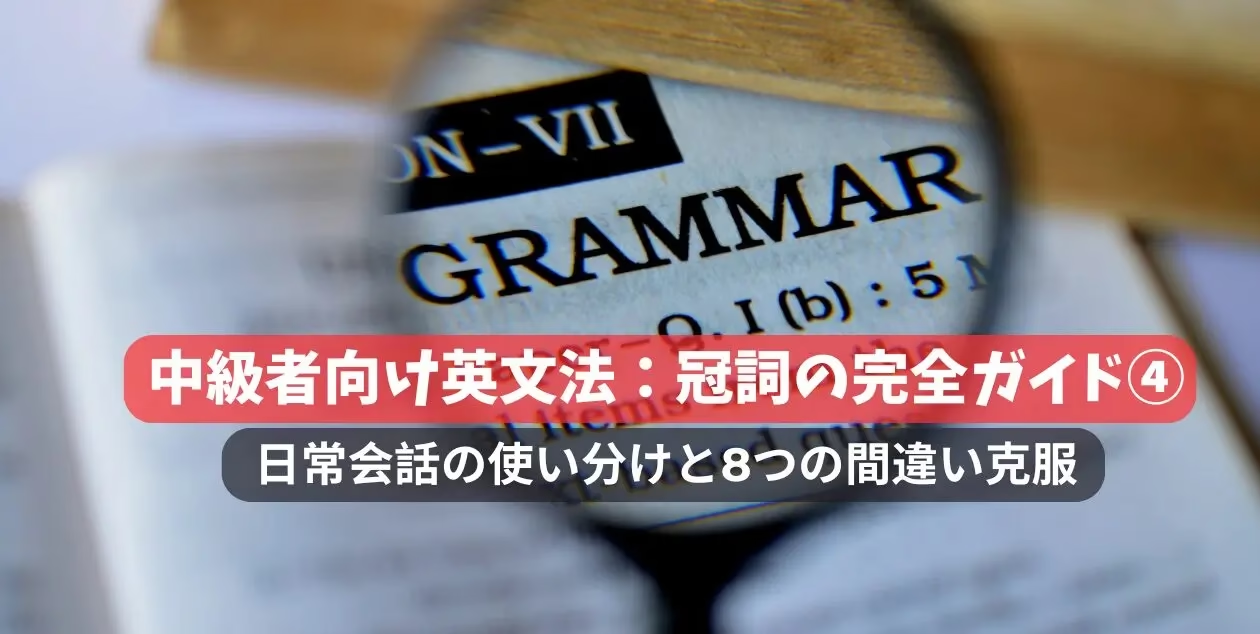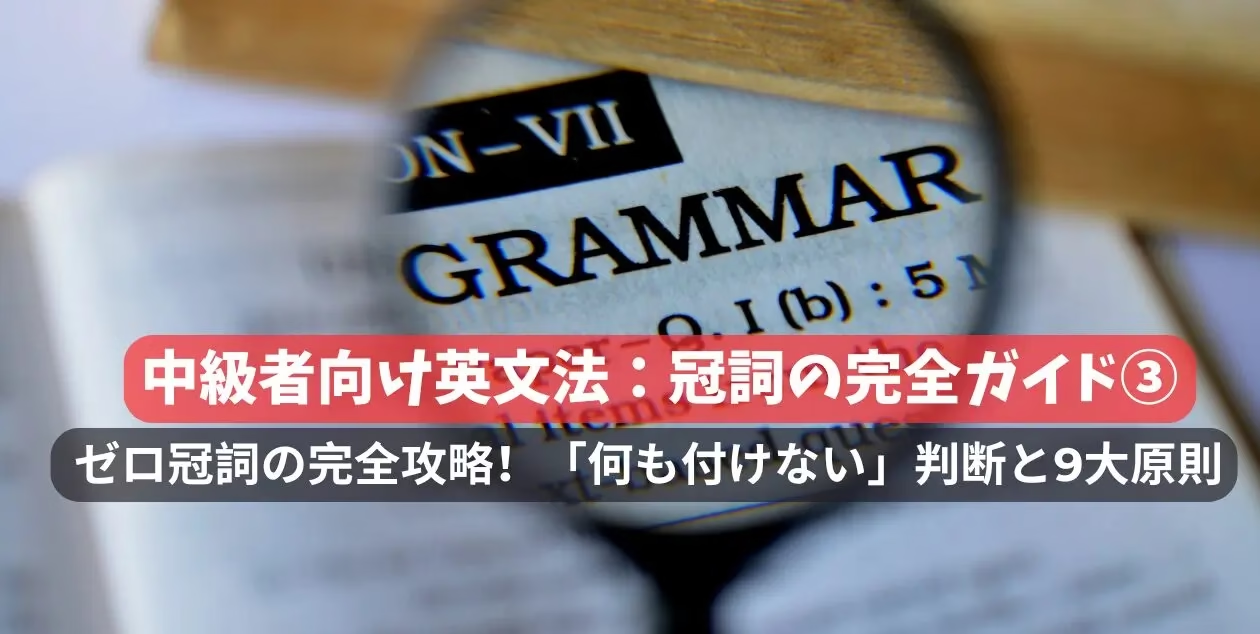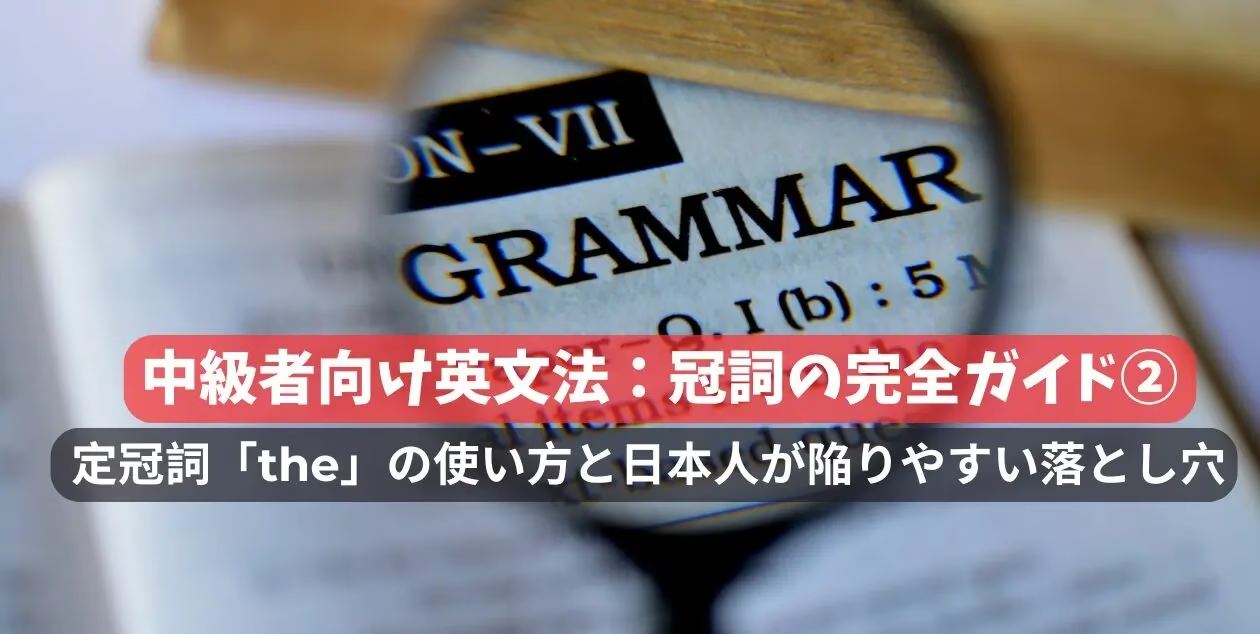海外で運転中に交通事故に遭遇してしまう。想像するだけでもパニックになりそうな状況ですが、適切な英語表現を知っているかどうかで、その後の対応と精神的な負担は劇的に変わります。言語の壁が、冷静な事故処理を妨げる最大の障害になりかねません。しかし、ご安心ください。必要な英会話フレーズを事前に習得しておけば、緊急時にも冷静に、そして的確に状況を伝えられるようになります。
この記事は、海外で交通事故に遭ってしまった時に、現場から警察への連絡、相手運転手との情報交換、そして保険会社への報告と請求手続きに至るまで、時系列で必要な英語表現を完全網羅したガイドです。発音記号と実践的な会話例も豊富に紹介し、誰もが不安な状況で自信を持って対応できるコミュニケーション術を身につけられるように構成されています。この完全ガイドを読み込み、万が一の事態に備えましょう。
1. 事故直後・安全確保の英語表現
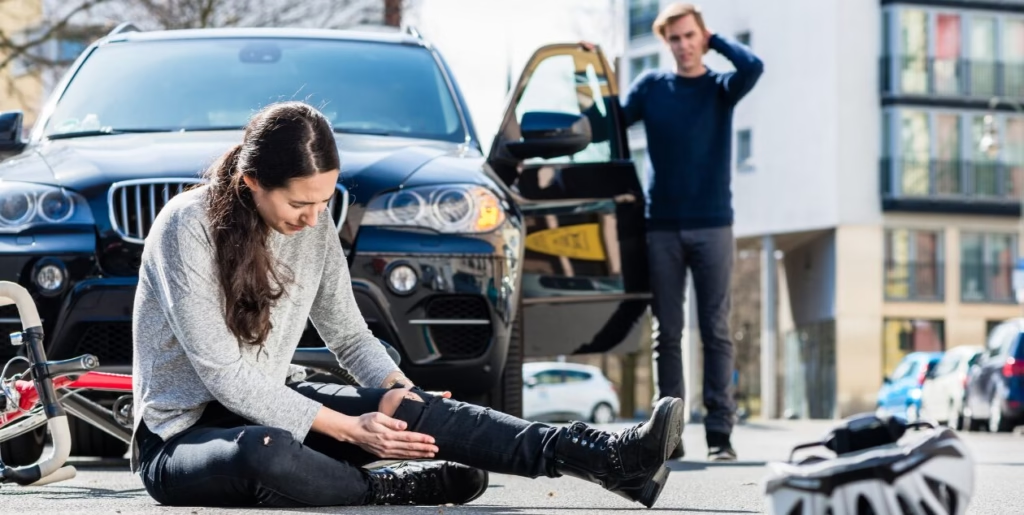
事故が発生したら、まず何よりも安全確保が最優先です。以下の表現を覚えて、冷静に対応しましょう。
check for injuries
- 発音記号: [ʧɛk fər ˈɪnʤəriz]
- 意味: 怪我の有無を確認する
- 解説: 自分と乗員・その他関係者の状態を速やかに確認する際に使用
- 例文: Check for injuries before moving vehicles.
- 和訳: 車両を動かす前に怪我の有無を確認してください。
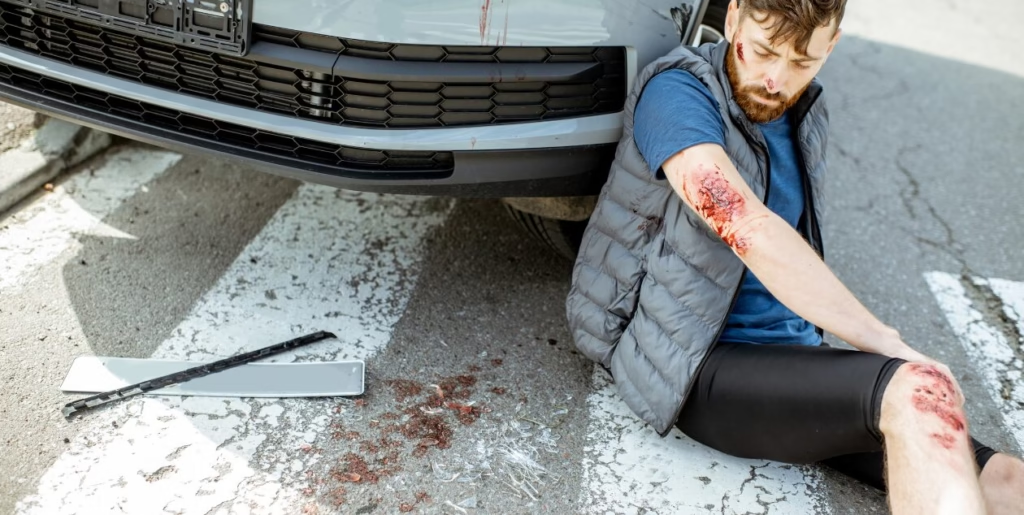
move to a safe area
- 発音記号: [muːv tuː ə seɪf ˈɛriə]
- 意味: 安全な場所へ移動する
- 解説: 二次事故予防のため路肩・安全地帯へ移動する際に使用
- 例文: Move your vehicle to a safe area if possible.
- 和訳: 可能であれば車を安全な場所へ移動してください。
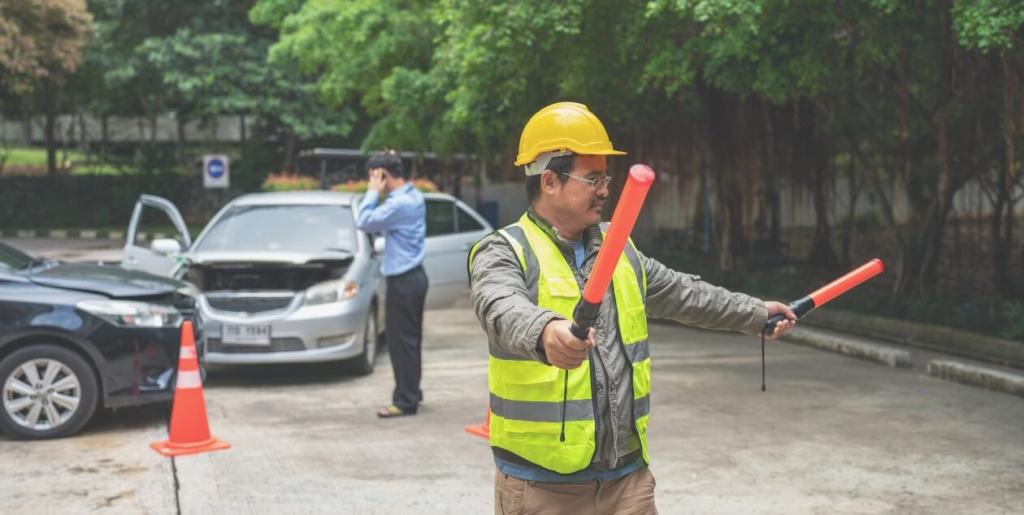
事故直後は誰もがパニックになりがちですが、これらの基本的な安全確保の表現を知っておくことで、適切な初期対応ができます。
2. 相手運転手・現場対応の英語表現
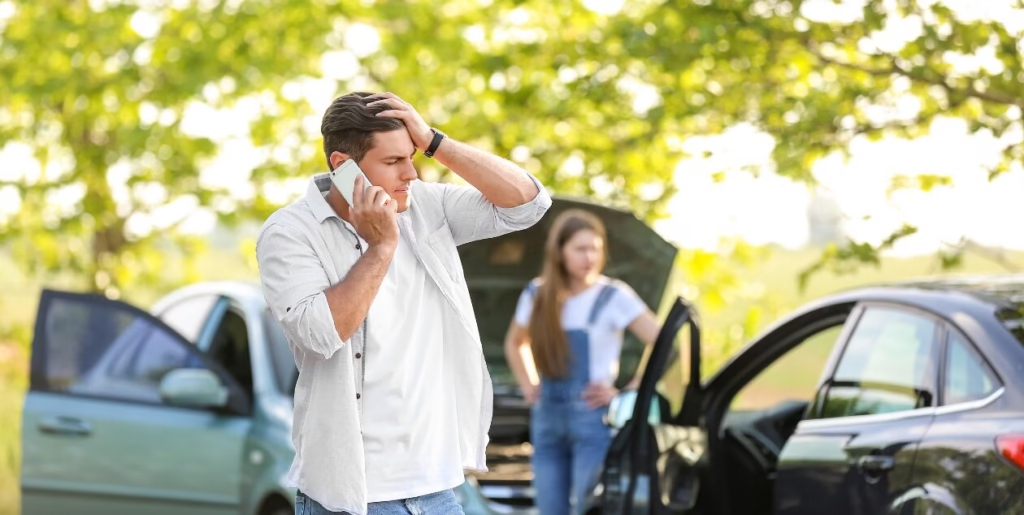
安全確保の次は、相手運転手との情報交換や現場の記録が重要になります。
exchange information
- 発音記号: [ɪksˈʧeɪndʒ ˌɪnfərˈmeɪʃən]
- 意味: 情報を交換する
- 解説: 名前・住所・電話・車両・保険情報などを交換する際に使用
- 例文: Exchange information with the other driver.
- 和訳: 相手運転手と情報を交換しましょう。
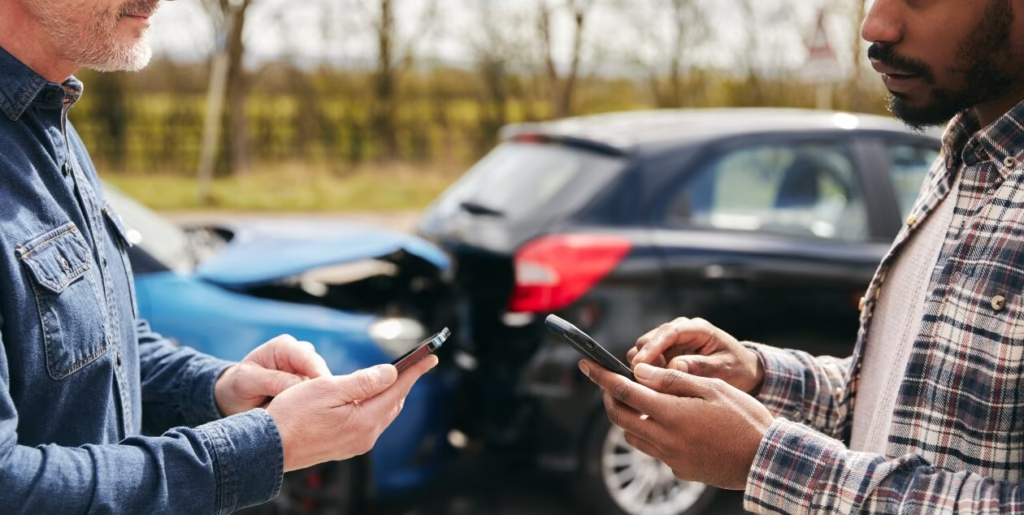
take photos of the damage
- 発音記号: [teɪk ˈfəʊtəʊz əv ðə ˈdæmɪdʒ]
- 意味: 損傷箇所の写真を撮る
- 解説: 車・現場・道路状態などを記録する際に使用
- 例文: Take photos of all damage before leaving the scene.
- 和訳: 現場を離れる前にすべての損傷の写真を撮ってください。
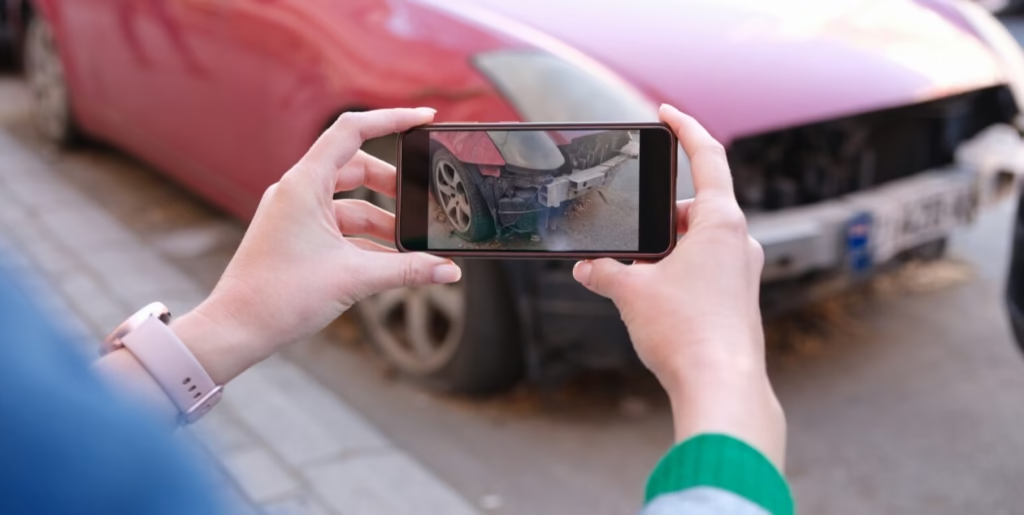
identify witnesses
- 発音記号: [aɪˈdɛntɪfaɪ ˈwɪtnəsɪz]
- 意味: 目撃者の特定
- 解説: 現場証言・連絡先を取得する際に使用
- 例文: Identify witnesses and get their contact details.
- 和訳: 目撃者を確認し連絡先を聞きましょう。
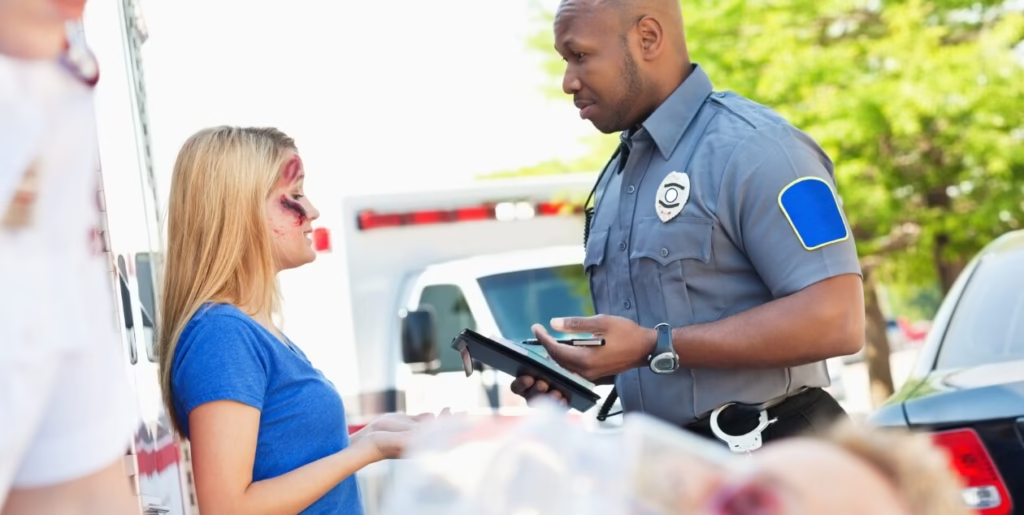
証拠保全は後の保険手続きや裁判で重要な役割を果たすため、これらの表現をしっかり覚えておきましょう。
3. 警察への連絡・報告の英語表現
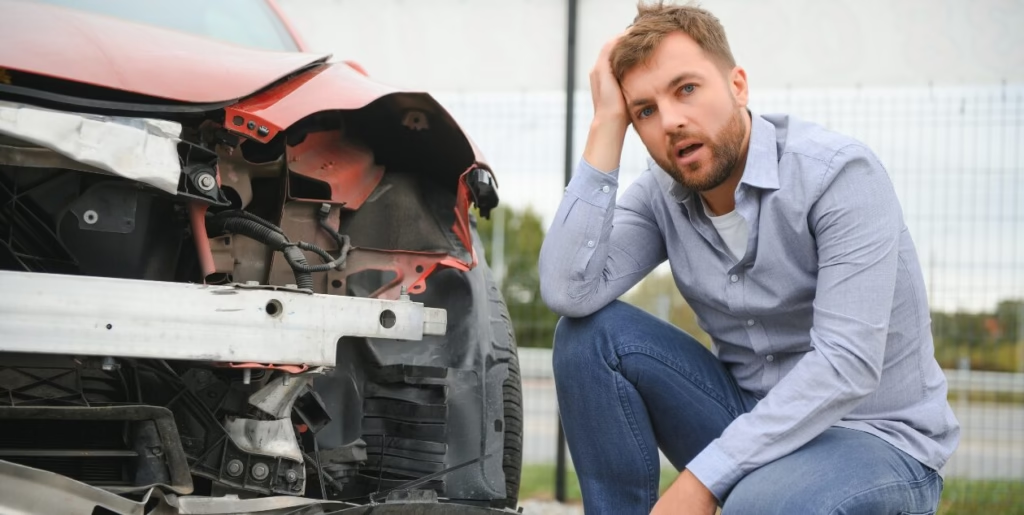
重大な事故や法的な報告義務がある場合は、警察への連絡が必要です。
contact the police
- 発音記号: [ˈkɒntækt ðə pəˈliːs]
- 意味: 警察に連絡する
- 解説: 重大事故・法令上報告義務がある場合に使用
- 例文: Contact the police to report the accident.
- 和訳: 事故を報告するため警察に連絡してください。
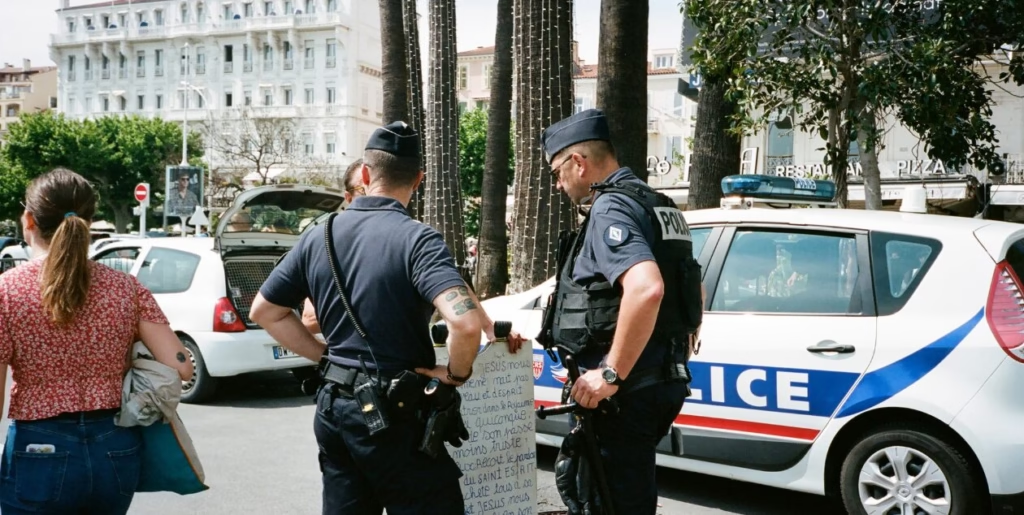
report the accident
- 発音記号:[rɪˈpɔːrt ði ˈæksɪdənt]
- 意味: 事故の発生を報告する
- 解説: 警察到着時口頭・電話で状況説明する際に使用
- 例文: Report the accident to the officer.
- 和訳: 事故の発生を警察官に報告しましょう。
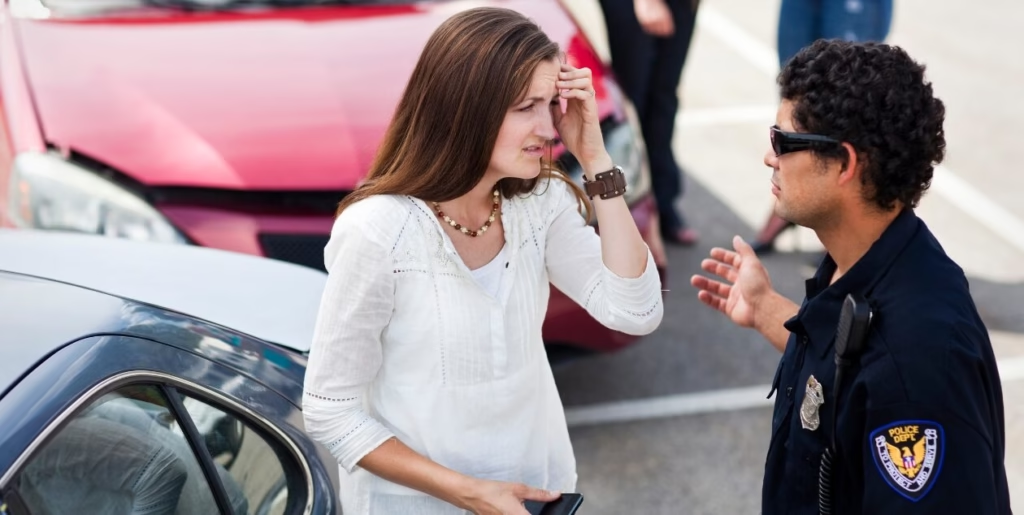
4. 警察官とのやりとり・現場検証の英語表現
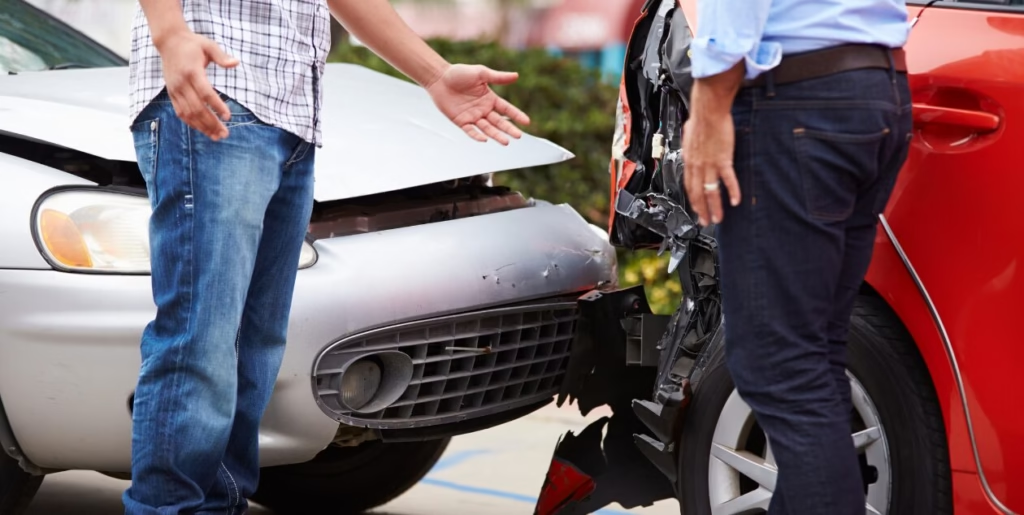
警察官が到着したら、正確かつ誠実に対応することが重要です。
describe the circumstances
- 発音記号:[dɪˈskraɪb ðə ˈsɜːrkəmstənsɪz]
- 意味: 事故発生状況を説明する
- 解説: 発生時の経緯・予測・対応・天候等詳細を説明する際に使用
- 例文: Describe the circumstances of the accident to the police.
- 和訳: 事故の状況を警察に説明してください。
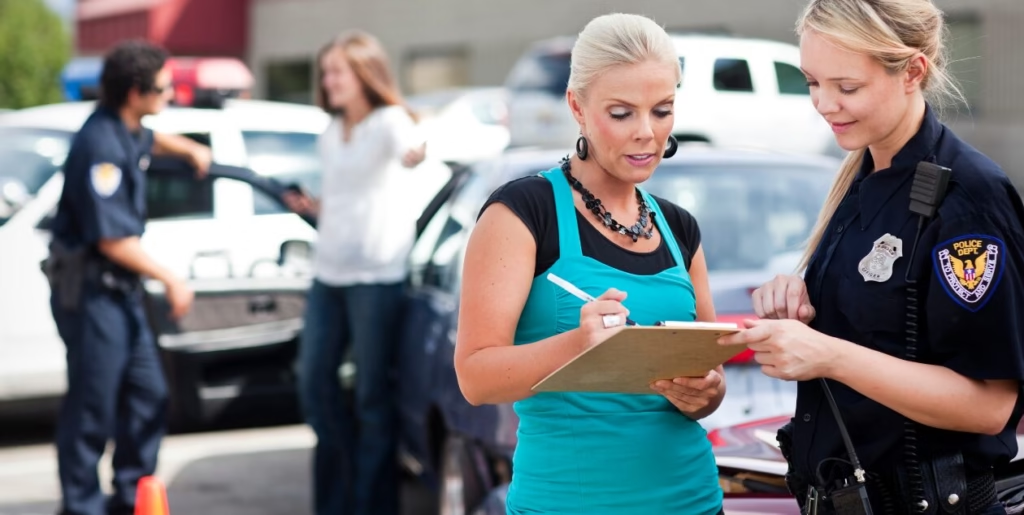
provide driver’s license and registration
- 発音記号:[prəˈvaɪd ˈdraɪvərz ˈlaɪsəns ənd ˌrɛdʒɪˈstreɪʃən]
- 意味: 免許証・車両登録証を提示
- 解説: 身分確認・書類確認は必須事項
- 例文: Provide your driver’s license and registration to the officer.
- 和訳: 警察官に免許証と登録証を提示してください。
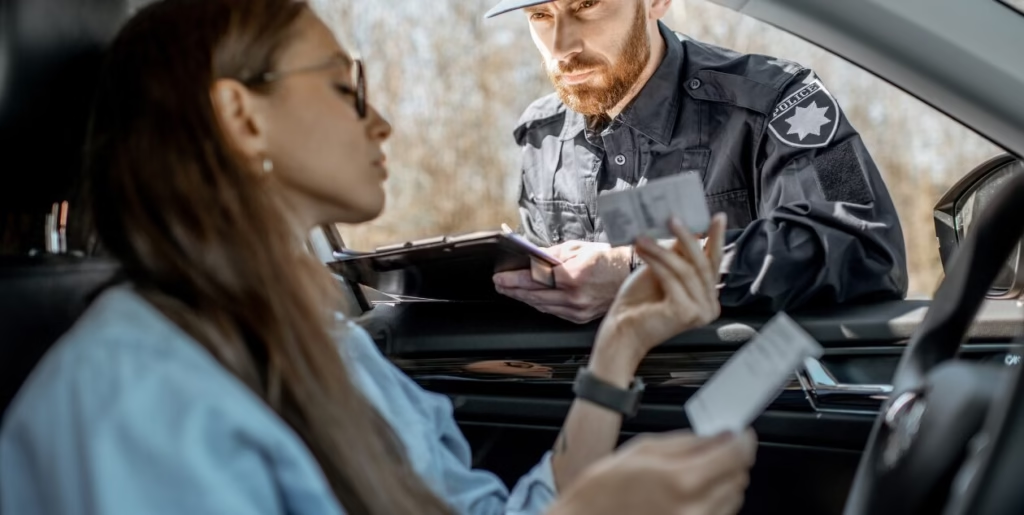
answer police questions
- 発音記号: [ˈænsər pəˈliːs ˈkwɛsʧənz]
- 意味: 警察官の質問に答える
- 解説: 事故原因・対応・現場状況などの問診に答える際に使用
- 例文: Answer all police questions truthfully.
- 和訳: 警察官の質問には正直に答えましょう。
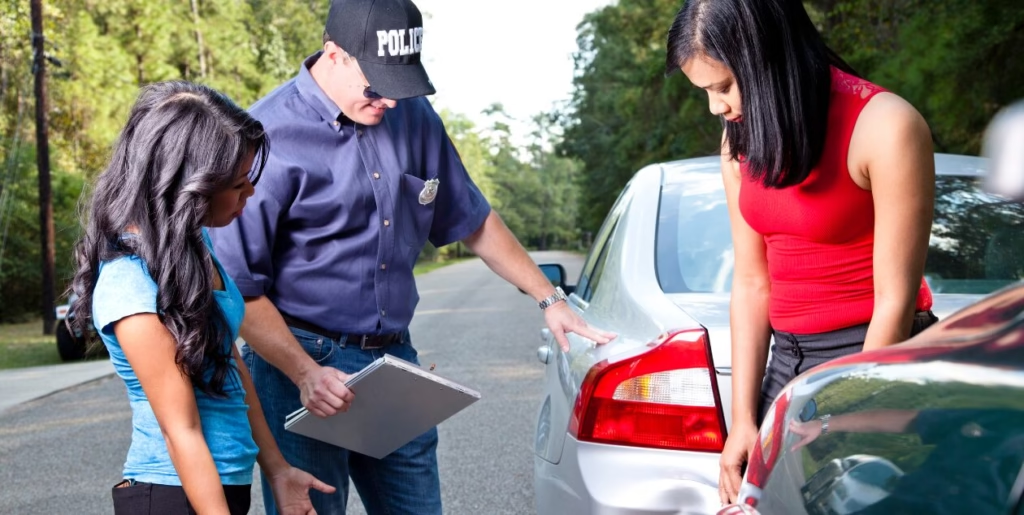
receive police report number
- 発音記号: [rɪˈsiːv pəˈliːs rɪˈpɔːrt ˈnʌmbər]
- 意味: 警察報告書番号を受け取る
- 解説: 保険申請・示談で重要な情報となる
- 例文: Ask for the police report number after investigation.
- 和訳: 現場検証後に警察報告書番号を必ず聞いてください。
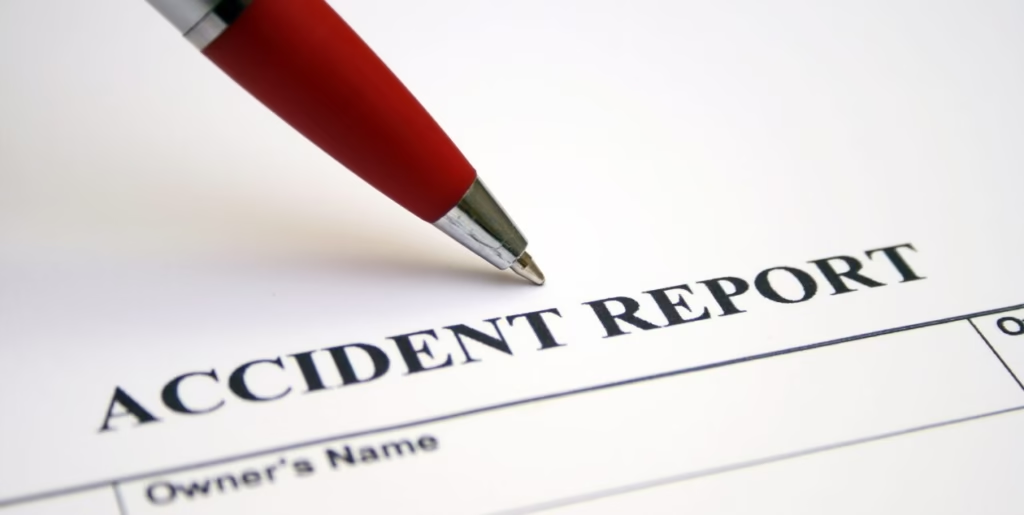
5. 保険会社との連絡・手続きの英語表現
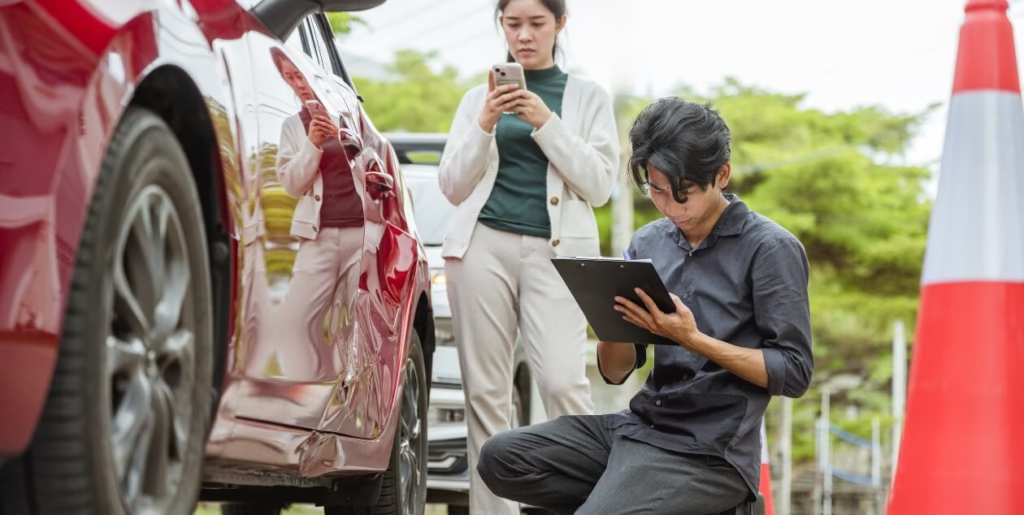
現場対応が終わったら、速やかに保険会社への連絡と手続きを行います。
contact the insurance company
- 発音記号:[ˈkɒntækt ði ɪnˈʃʊrəns ˈkʌmpəni]
- 意味: 保険会社に連絡する
- 解説: 事故が終わり次第速やかに連絡する際に使用
- 例文: Contact your insurance company as soon as possible.
- 和訳: 可能な限り早く保険会社に連絡してください。
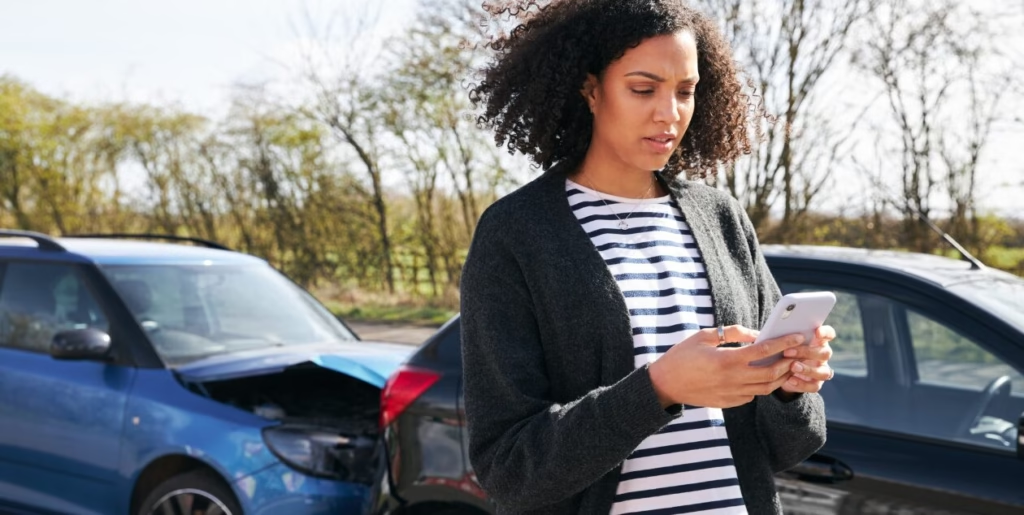
file an insurance claim
- 発音記号:[faɪl ən ɪnˈʃʊrəns kleɪm]
- 意味: 保険金請求を提出する
- 解説: 修理費用・医療費請求申請する際に使用
- 例文: File an insurance claim for damages.
- 和訳: 損傷について保険請求を提出してください。
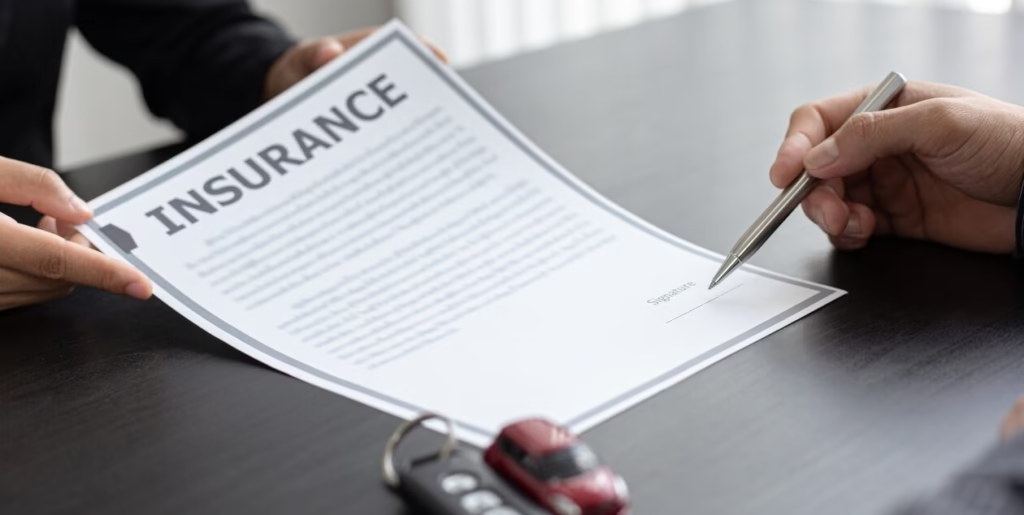
provide a damage report
- 発音記号:[prəˈvaɪd ə ˈdæmɪdʒ rɪˈpɔːrt]
- 意味: 損害報告書を保険会社に提出する
- 解説: 修理・損傷・医療費等の明細を提出する際に使用
- 例文: Provide a damage report to your insurer.
- 和訳: 損害報告書を保険会社へ送付しましょう。
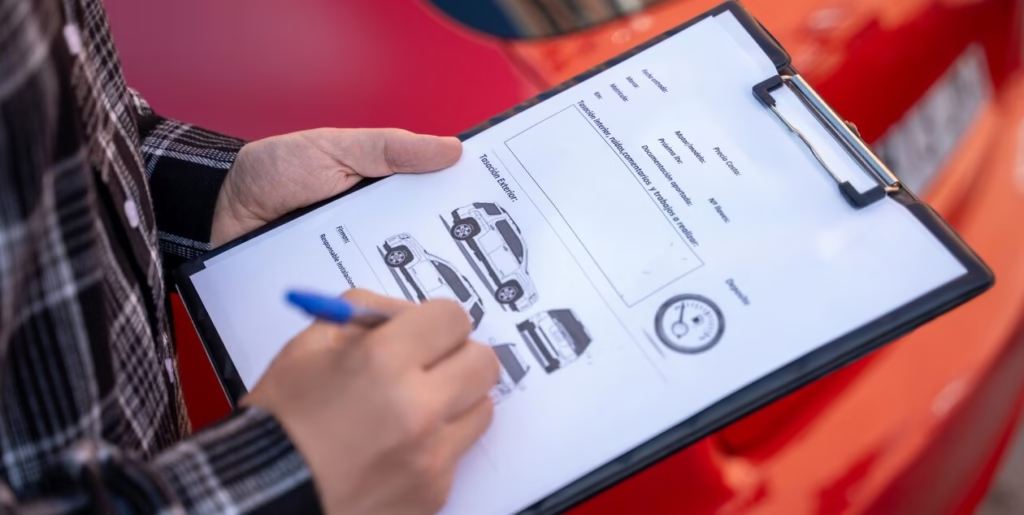
submit DMV accident report
- 発音記号: [səbˈmɪt ˈdiːɛmˈviː ˈæksɪdənt rɪˈpɔːrt]
- 意味: DMV(州交通局)事故報告書を提出する
- 解説: 州によって規定損害額を超える場合義務がある
- 例文: Submit a DMV accident report if required by law.
- 和訳: 州法で義務付けられていればDMV事故報告書も提出してください。
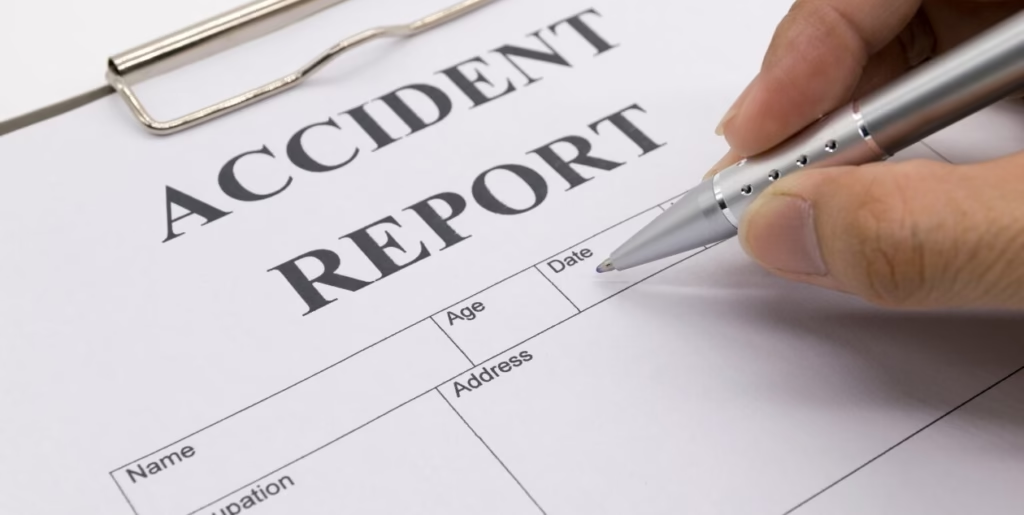
return home
- 発音記号: [rɪˈtɜːrn hoʊm]
- 意味: 帰宅する
- 解説: 事故後現場対応~保険申請など完了次第帰宅する
- 例文: Return home once all procedures are complete.
- 和訳: すべての手続きが終わったら帰宅しましょう。
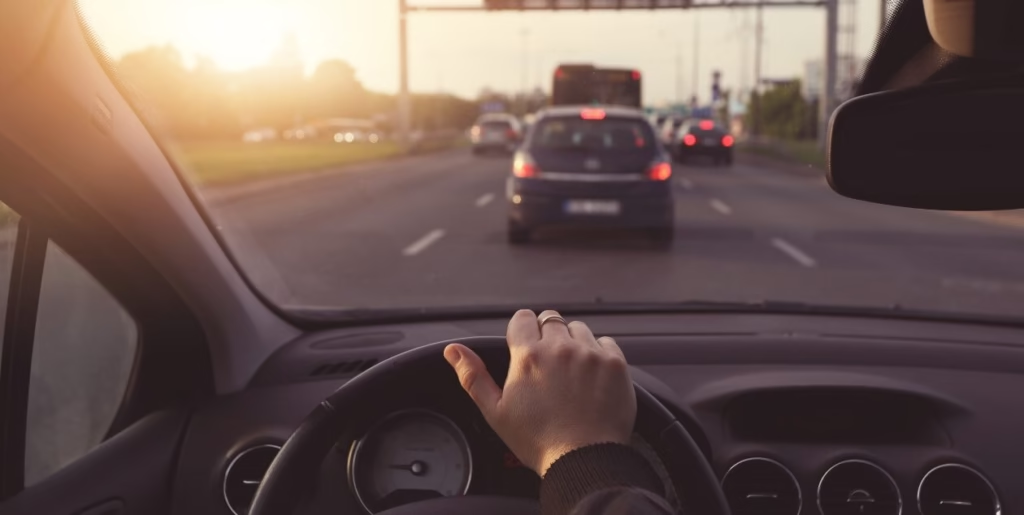
6. 事故関連の重要な名詞・形容詞
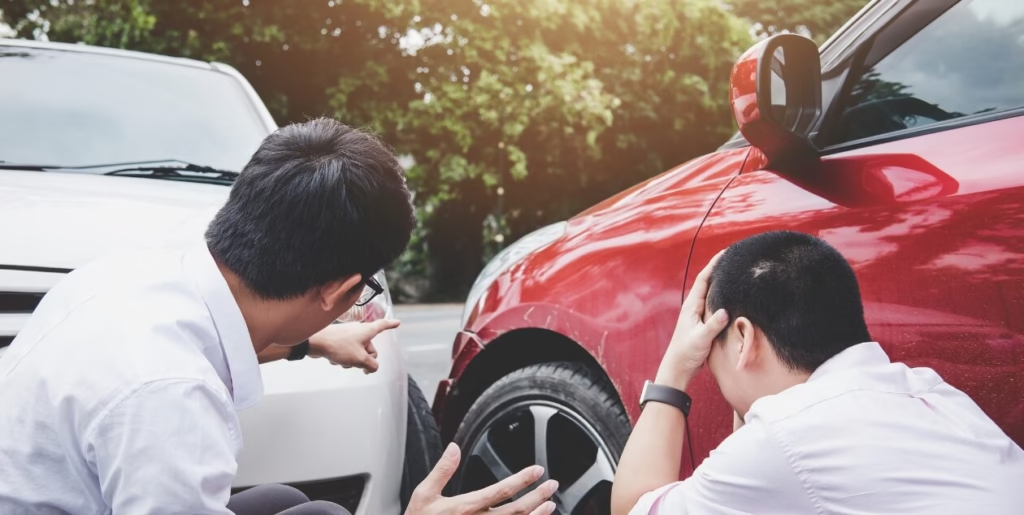
事故対応で頻繁に使われる重要な単語も覚えておきましょう。
重要な名詞句
accident scene
- 発音記号: [ˈæksɪdənt siːn]
- 意味: 事故現場
- 解説: 交通事故が発生した場所
- 例文: Stay at the accident scene until the police arrive.
- 和訳: 警察が到着するまで事故現場にとどまりましょう。
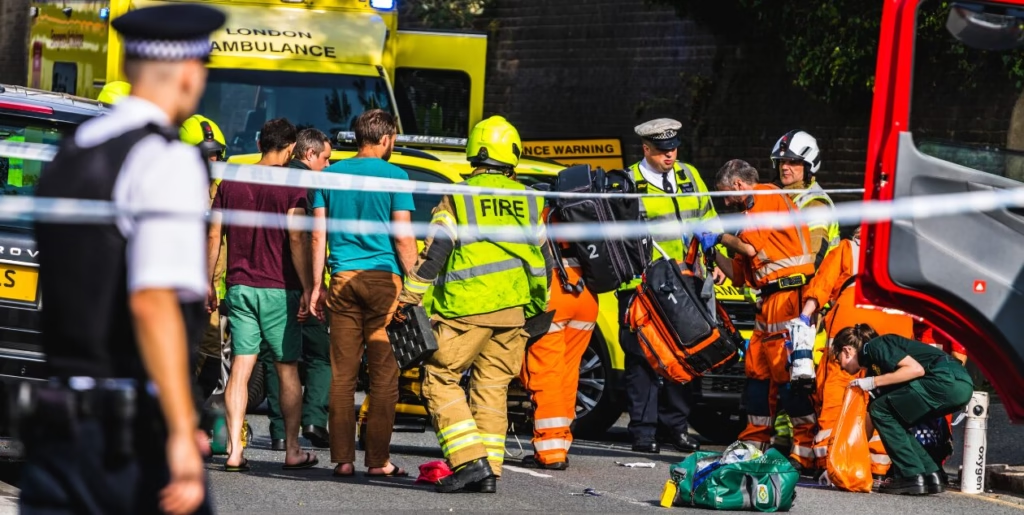
police report
- 発音記号: [pəˈliːs rɪˈpɔːrt]
- 意味: 警察報告書
- 解説: 現場検証や保険・裁判等で証拠になる記録
- 例文: You need a police report to file an insurance claim.
- 和訳: 保険請求には警察報告書が必要です。
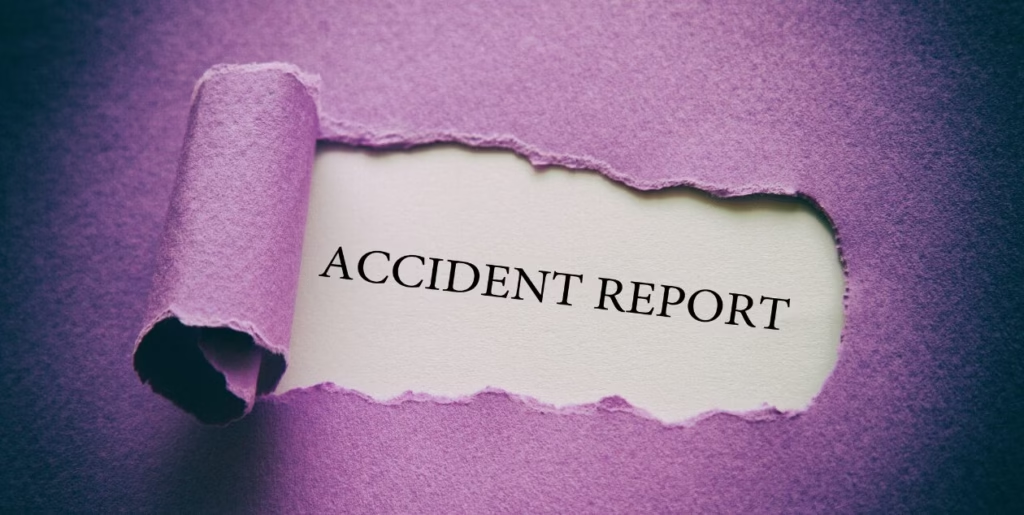
driver’s license
- 発音記号: [ˈdraɪvərz ˈlaɪsəns]
- 意味: 運転免許証
- 解説: 警察・保険手続きで必要な本人確認書類
- 例文: Show your driver’s license to the police officer.
- 和訳: 警察官に運転免許証を提示してください。
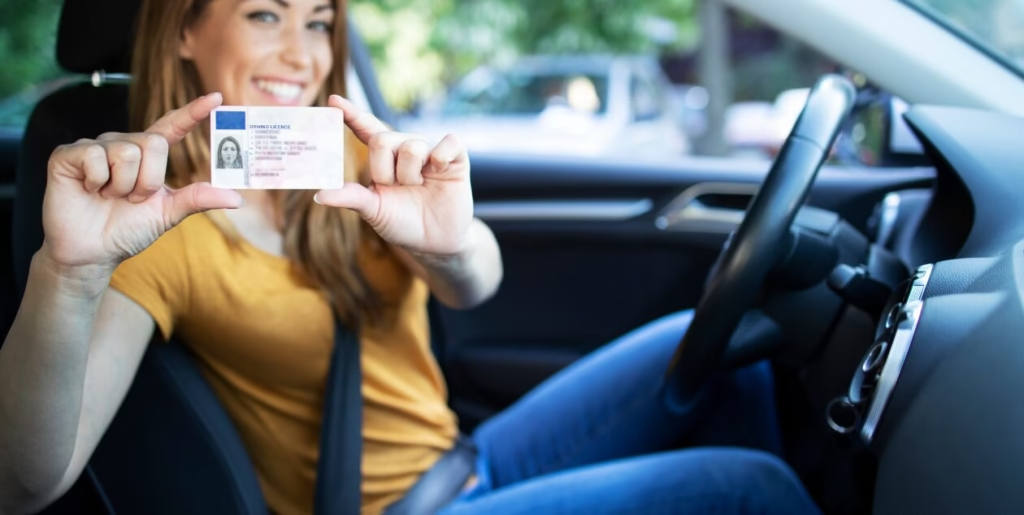
registration
- 発音記号: [ˌrɛdʒɪˈstreɪʃən]
- 意味: 車両登録証
- 解説: 自動車所有・使用者情報を記載した書類
- 例文: Keep your registration in the glove compartment.
- 和訳: 登録証はグローブボックスに保管しましょう。
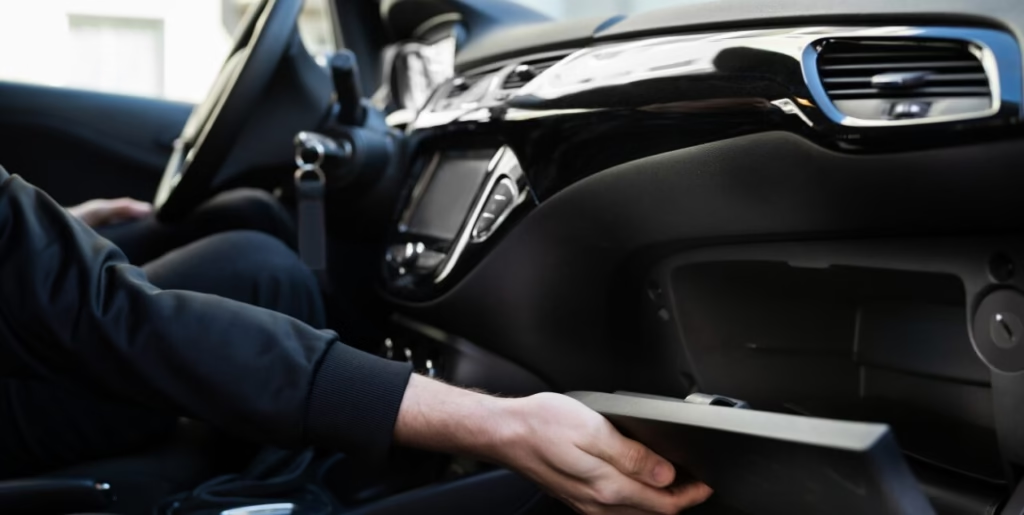
insurance information
- 発音記号: [ɪnˈʃʊrəns ˌɪnfərˈmeɪʃən]
- 意味: 保険情報
- 解説: 自動車保険の証書、連絡、契約内容
- 例文: Exchange insurance information with the other driver.
- 和訳: 相手運転手と保険情報を交換しましょう。
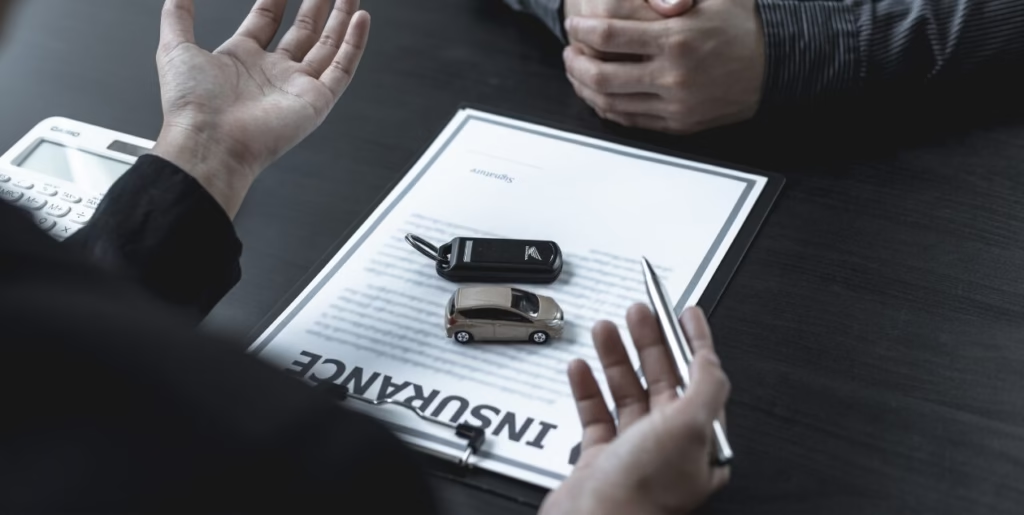
witness statement
- 発音記号: [ˈwɪtnəs ˈsteɪtmənt]
- 意味: 目撃者の証言・陳述
- 解説: 現場で事故の様子を証言する証拠文書
- 例文: Obtain a witness statement if anyone saw the accident.
- 和訳: 事故を目撃した人がいれば証言を取ってください。
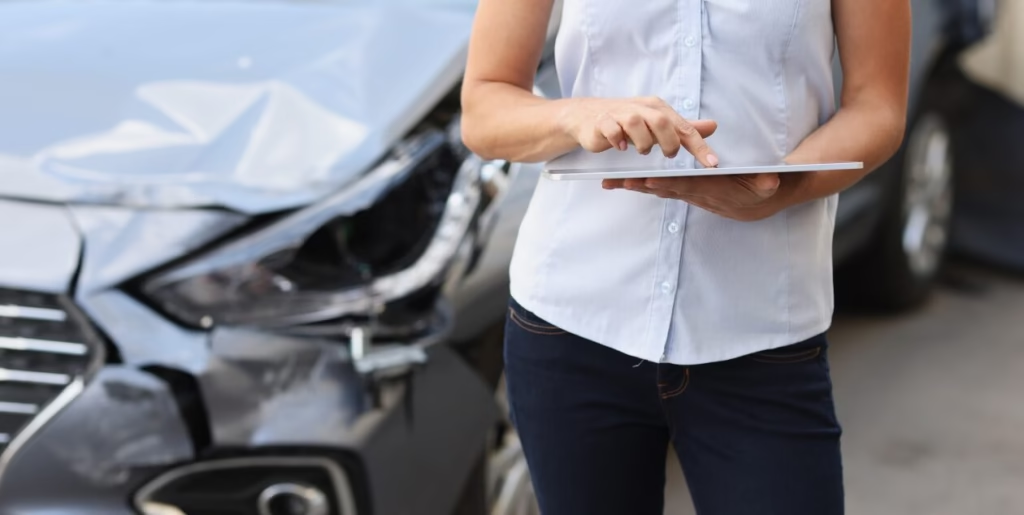
damage report
- 発音記号:[ˈdæmɪdʒ rɪˈpɔːrt]
- 意味: 損害報告書
- 解説: 壊れた部分・被害額をまとめた書類
- 例文: Submit a damage report to your insurance company.
- 和訳: 損害報告書を保険会社に提出してください。
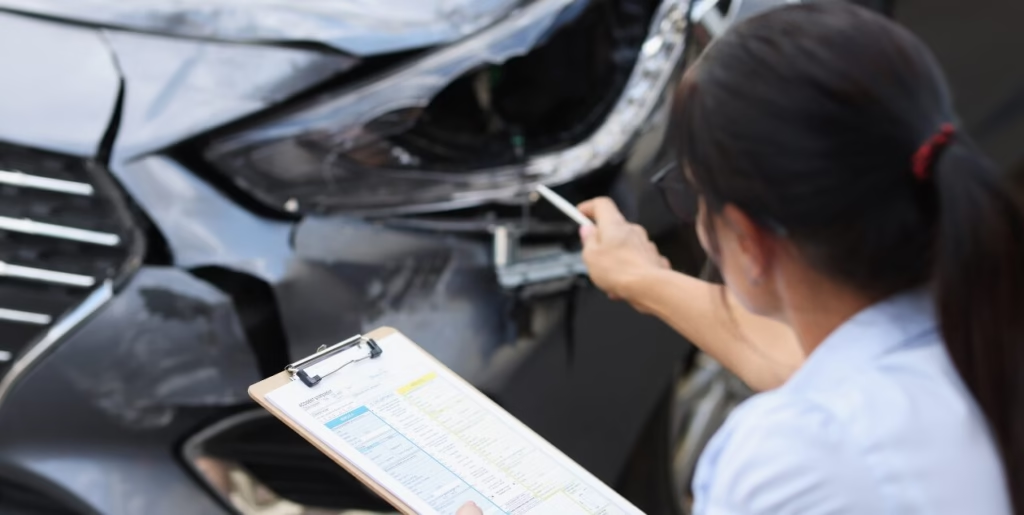
事故の種類を表す表現
fender-bender
- 発音記号: [ˈfɛndər ˈbɛndər]
- 意味: 軽い接触事故
- 解説: 小規模な損傷の交通事故(例:リアバンパーの押し当てなど)
- 例文: It was just a fender-bender, but we still had to call the police.
- 和訳: 小さな接触事故でしたが、警察を呼ぶ必要がありました。
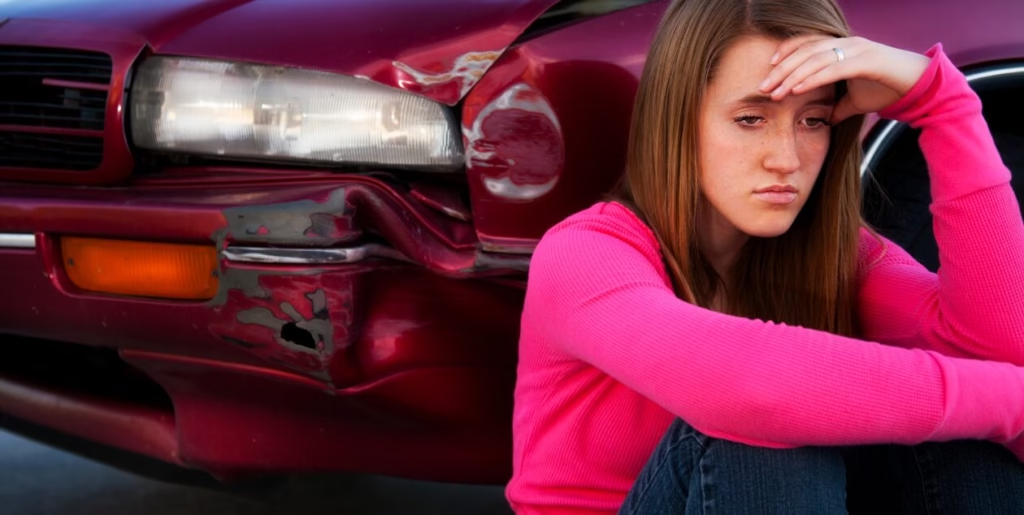
head-on collision
- 発音記号:[ˈhɛd ɑːn kəˈlɪʒən]
- 意味: 正面衝突
- 解説: 正面同士で車両がぶつかる重大事故
- 例文: A head-on collision usually causes serious injuries.
- 和訳: 正面衝突は通常、重傷事故につながります。
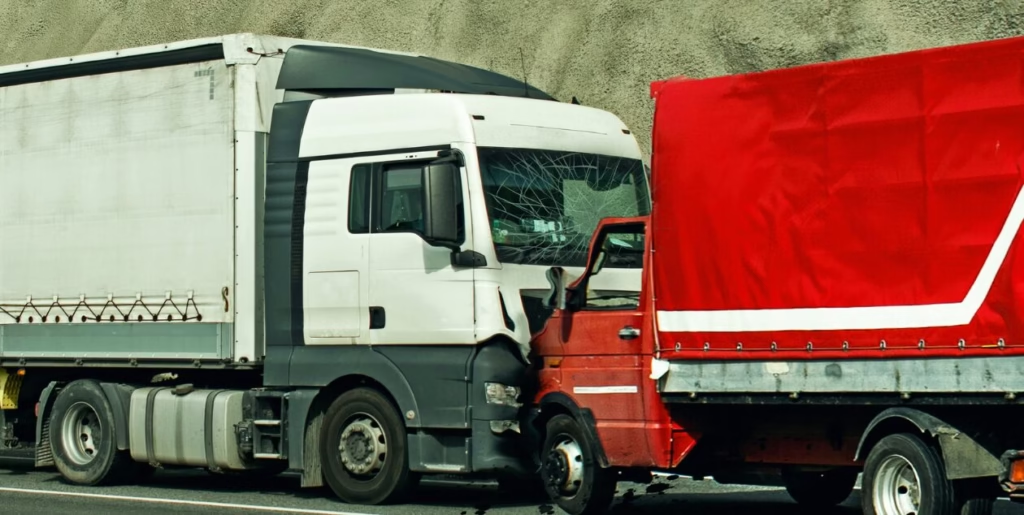
pile-up
- 発音記号: [ˈpaɪl ʌp]
- 意味: 多重追突事故(玉突き事故)
- 解説: 複数台が連続して衝突する高速道路等の重大事故
- 例文: The accident turned into a pile-up with six cars involved.
- 和訳: その事故は6台が絡む多重追突事故になりました。
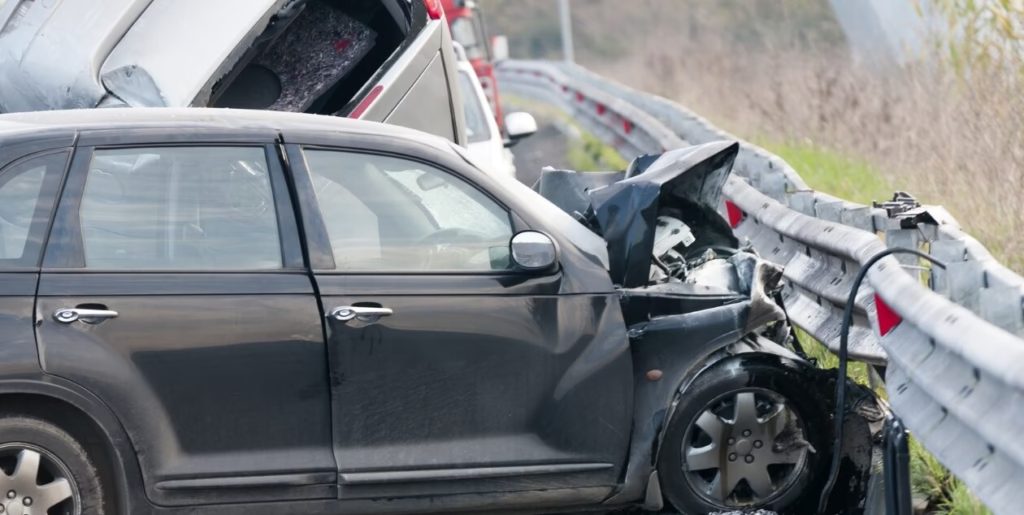
その他の重要な名詞句
tow truck
- 発音記号:[toʊ trʌk]
- 意味: レッカー車
- 解説: 故障・事故車両を現場から運ぶ専用車両
- 例文: A tow truck arrived to clear the wrecked vehicles.
- 和訳: レッカー車が到着し事故車を撤去しました。
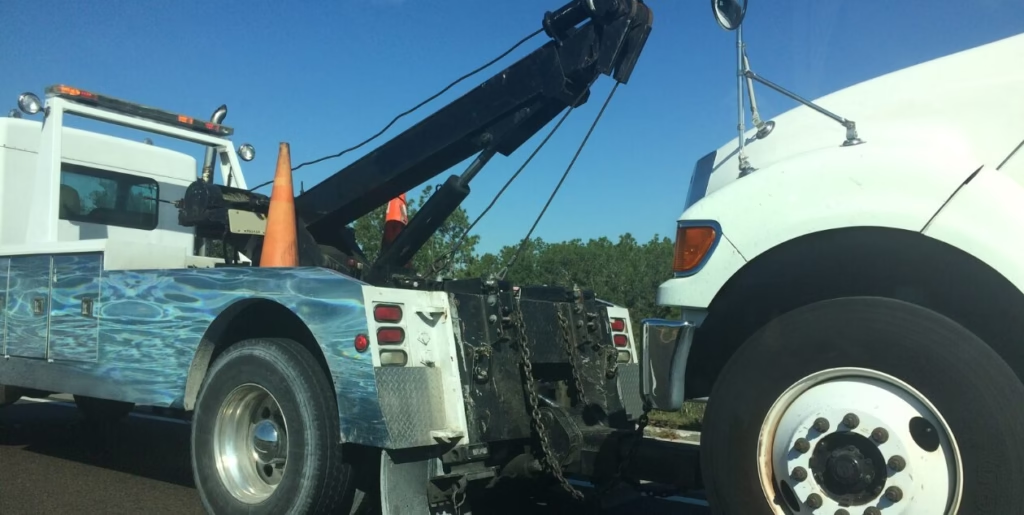
claim form
- 発音記号:[kleɪm fɔːrm]
- 意味: 保険請求書
- 解説: 事故後に保険会社へ提出する申請用紙
- 例文: Fill out the claim form for your insurance.
- 和訳: 保険請求書に記入してください。
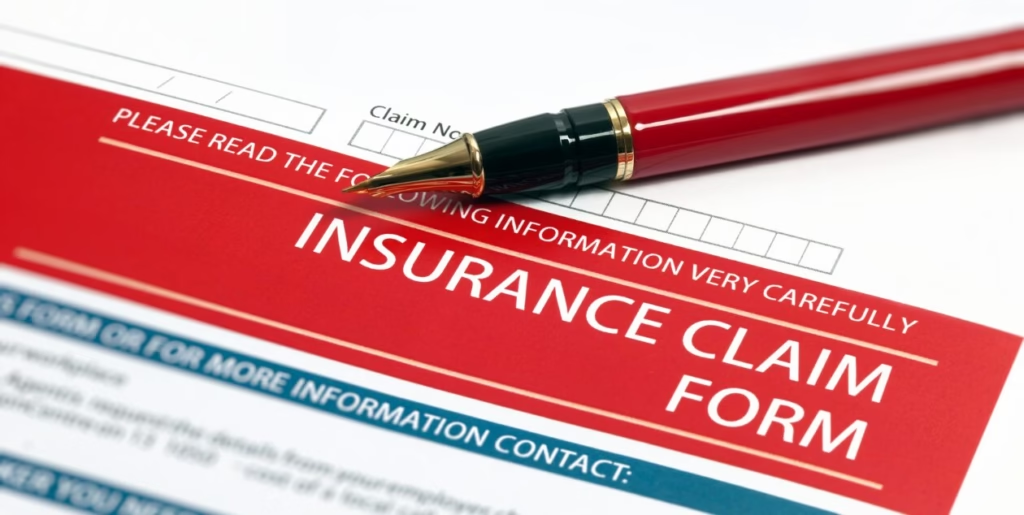
DMV accident report
- 発音記号: [ˈdiːɛmˈviː ˈæksɪdənt rɪˈpɔːrt]
- 意味: 州交通局事故報告書
- 解説: 法定損傷額や人身事故の際DMVに提出する公式書類
- 例文: The DMV accident report is due within ten days.
- 和訳: DMV事故報告書は10日以内に提出する必要があります。

状況を表す形容詞・副詞
severely damaged
- 発音記号:[sɪˈvɪrli ˈdæmɪdʒd]
- 意味: ひどく損傷した
- 解説: 車両や物の損傷状況を強く説明したいときの形容詞句
- 例文: The front bumper was severely damaged in the accident.
- 和訳: 事故でフロントバンパーがひどく損傷しました。
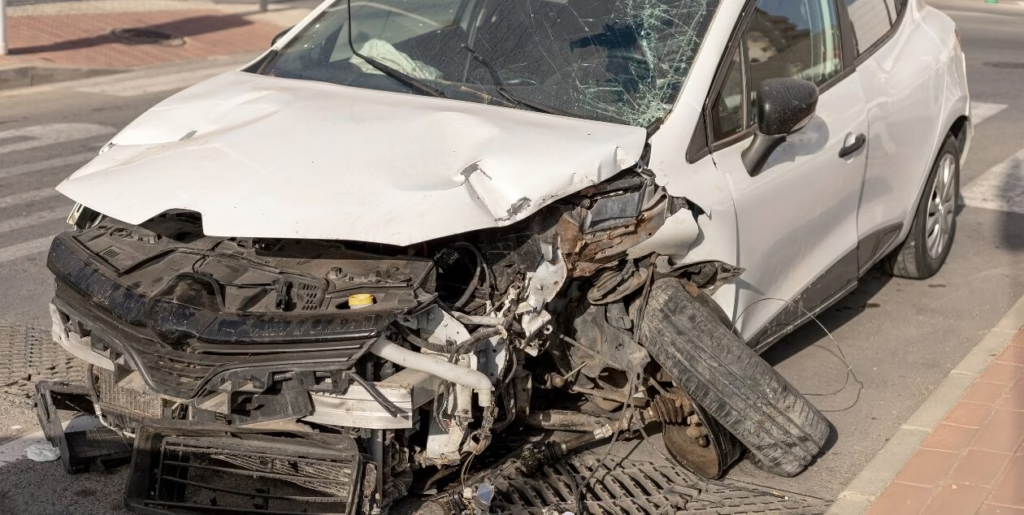
slightly injured
- 発音記号:[ˈslaɪtli ˈɪnʤərd]
- 意味: 軽傷を負った
- 解説: 人の怪我具合の説明。医療報告や現場報告で頻出
- 例文: The passenger was only slightly injured.
- 和訳: 同乗者は軽傷を負っただけでした。
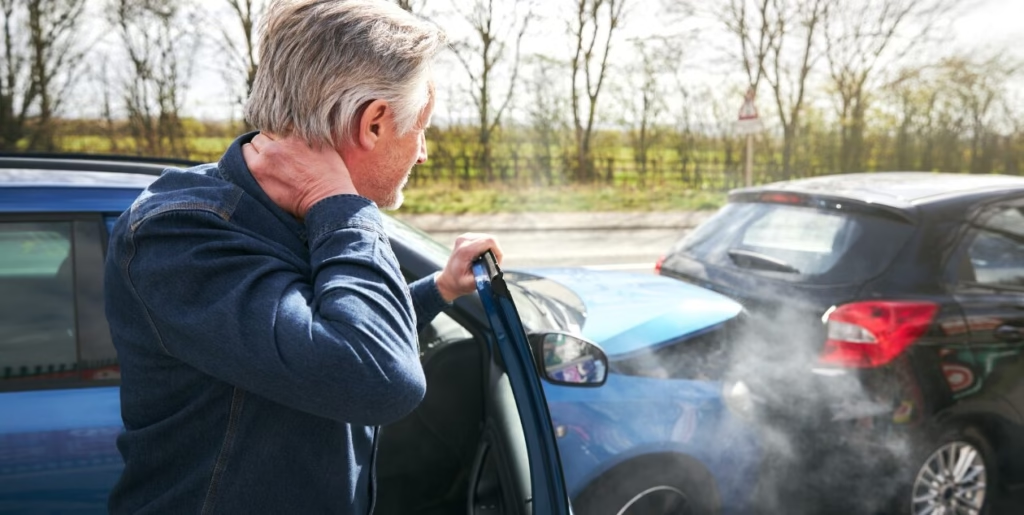
badly shaken
- 発音記号:[ˈbædli ˈʃeɪkən]
- 意味: ひどく動揺した/衝撃を受けた
- 解説: 精神的ダメージや、現場でのショックの程度に使う
- 例文: The driver was badly shaken but not physically hurt.
- 和訳: 運転手はひどく動揺していましたが、身体の怪我はありませんでした。
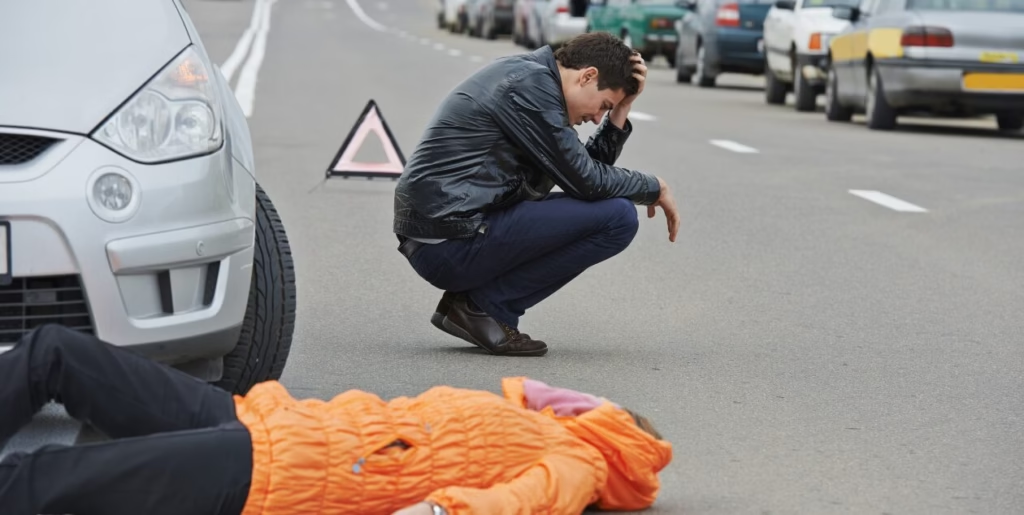
completely destroyed
- 発音記号:[kəmˈpliːtli dɪˈstrɔɪd]
- 意味: 完全に壊れた
- 解説: 車両・物・建物の全損状態に。保険請求や目撃証言で使用
- 例文: The car was completely destroyed after the collision.
- 和訳: 衝突の後、車は完全に壊れていました。
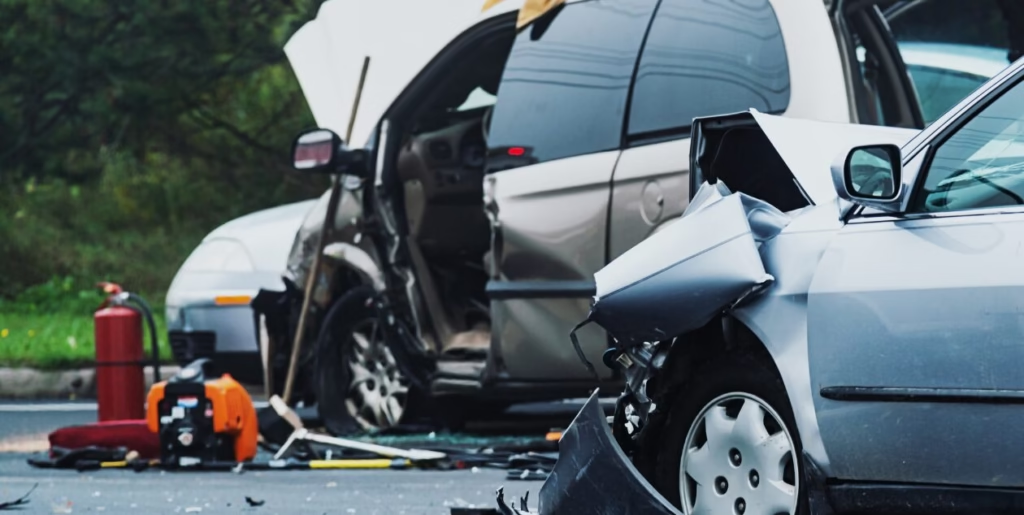
partially blocked
- 発音記号:[ˈpɑːrʃəli blɒkt]
- 意味: 部分的に塞がれていた
- 解説: 道路や交差点など障害の程度を説明する際
- 例文: The intersection was partially blocked after the crash.
- 和訳: 事故後、交差点は部分的に塞がれていました。
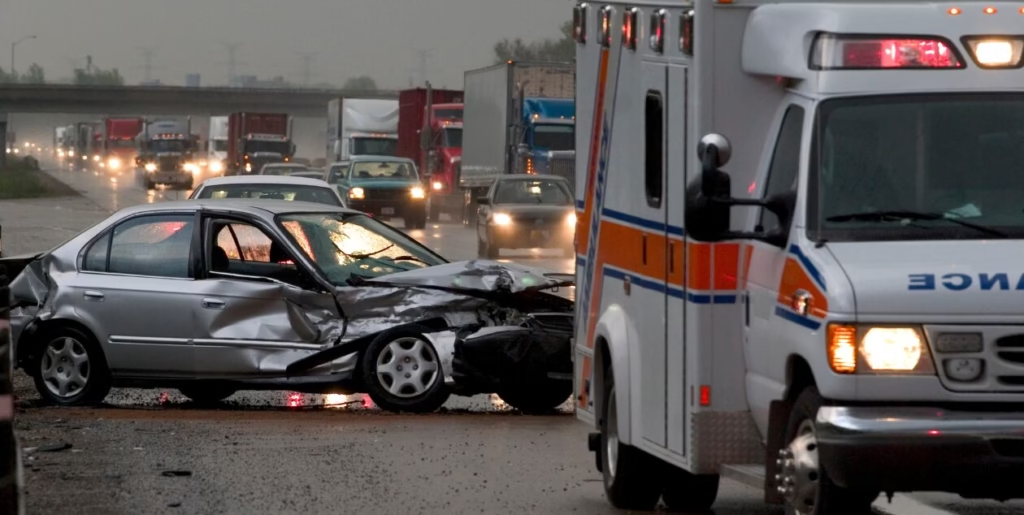
clearly at fault
- 発音記号:[ˈklɪrli æt fɔːlt]
- 意味: 明らかに過失がある
- 解説: 交通法違反や運転ミスの説明・警察説明時
- 例文: The other driver was clearly at fault for running the red light.
- 和訳: 相手運転手は赤信号無視で明らかに過失がありました。
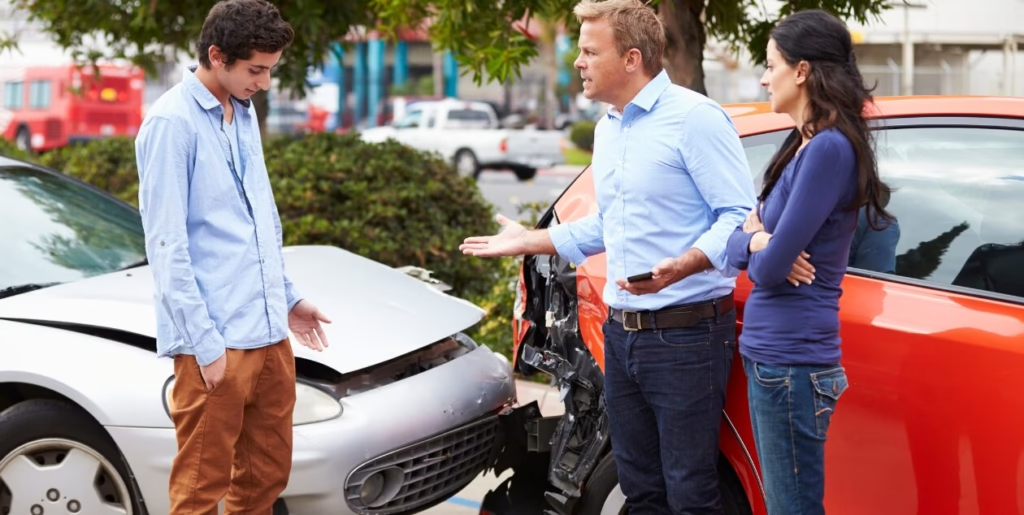
dangerously close
- 発音記号:[ˈdeɪndʒərəsli kloʊs]
- 意味: 危険なほど接近して
- 解説: 寸前の接触や危険運転の状況説明など
- 例文: The two cars were dangerously close before the collision.
- 和訳: 衝突前、2台の車は危険なほど接近していました。
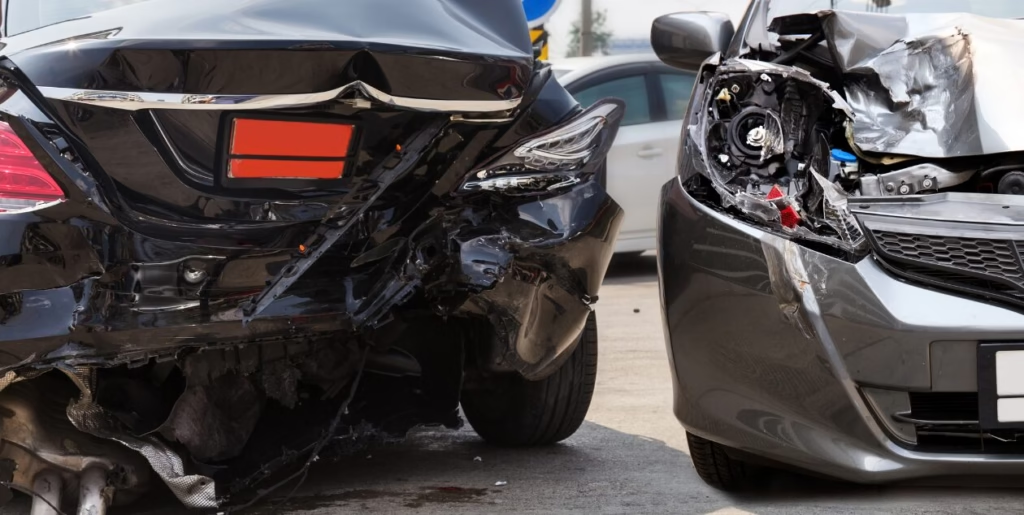
unexpectedly
- 発音記号: [ˌʌnɪkˈspɛktɪdli]
- 意味: 予想外に/突然
- 解説: 事故発生・道路状況等が予期せず変化した時
- 例文: The accident occurred unexpectedly at the busy intersection.
- 和訳: 事故は混雑した交差点で予想外に発生しました。
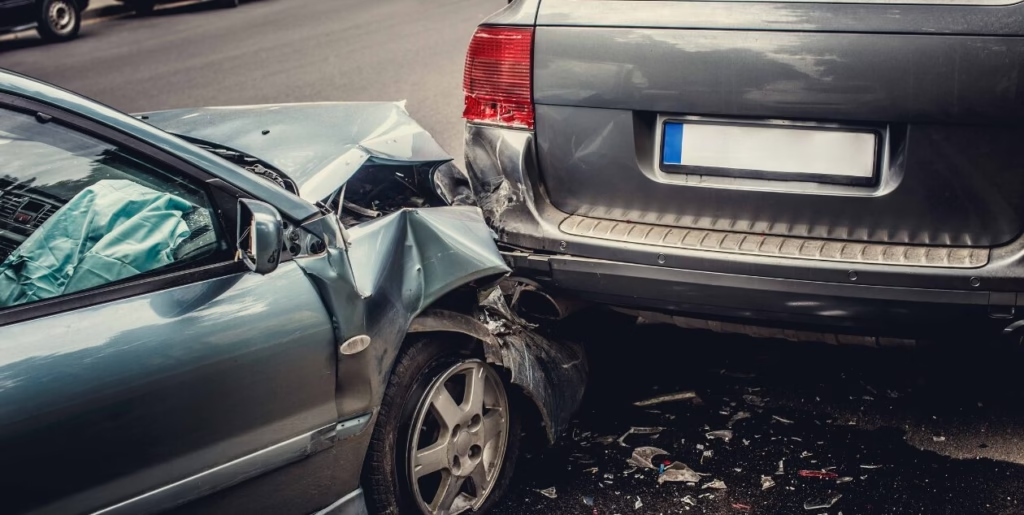
instantly
- 発音記号: [ˈɪnstəntli]
- 意味: 瞬時に/すぐに
- 解説: 事故や損傷の発生タイミングを強調する表現
- 例文: The airbags deployed instantly upon impact.
- 和訳: 衝突時、エアバッグが瞬時に作動しました。
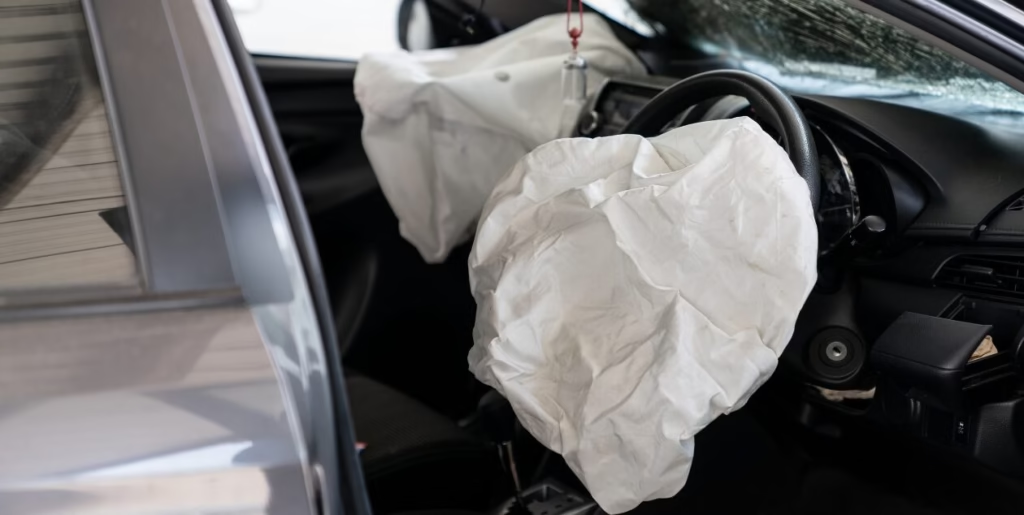
heavily congested
- 発音記号:[ˈhɛvɪli kənˈʤɛstɪd]
- 意味: 非常に混雑した
- 解説: 道路・交差点の交通量や渋滞の状態を示す
- 例文: The road was heavily congested after the accident.
- 和訳: 事故の後、道路は非常に混雑しました。
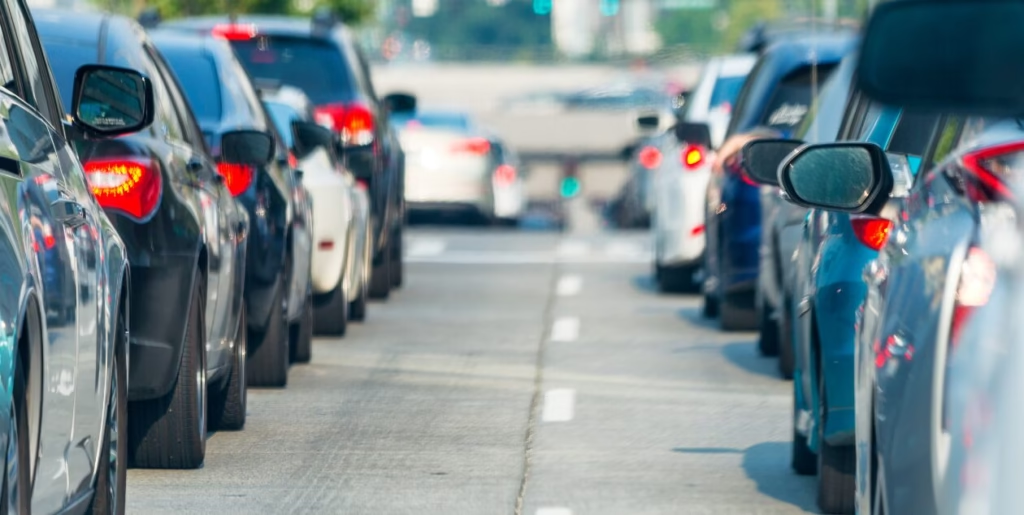
7. 実際の会話例とシチュエーション別対応

理論だけでなく、実際の会話例を通じて表現の使い方を学びましょう。
シチュエーション1:運転手同士の会話
Driver 1: Are you alright? I didn’t see you coming from that angle.
Driver 2: I’m okay, but my car has been severely damaged on the passenger side. What about you?
Driver 1: There’s some minor damage to the rear bumper. Should we exchange information?
Driver 2: Yes, let’s exchange our insurance information and driver’s license details.
Driver 1: Good idea. Also, we should take photos of the damage and the accident scene.
Driver 2: Agreed. Did you call the police yet?
Driver 1: Not yet. I think we should contact the police to file a report.
Driver 2: Okay, I’ll wait here while you do that.
Driver 1: When the officer arrives, please describe the circumstances of the accident clearly.
Driver 2: Sure. It all happened so fast — your car was dangerously close when you turned.
Driver 1: I’ll also provide my vehicle registration and answer any questions the police may have.
Driver 2: After the report, we should both get a copy of the police report for our insurers.
Driver 1: Absolutely. Then I’ll file an insurance claim and submit the damage report.
Driver 2: Hopefully this will get resolved quickly. Thanks for cooperating.
Driver 1: Thank you too. Stay safe!
Driver 1: 大丈夫ですか?あの角度から来るのは見えませんでした。
Driver 2: 大丈夫ですけど、助手席側がひどく損傷しました。あなたは?
Driver 1: 後ろのバンパーが少し損傷しています。情報を交換しましょうか?
Driver 2: はい、保険情報と運転免許証を交換しましょう。
Driver 1: それと、損傷の写真を撮って、事故現場も撮影しなければなりませんね。
Driver 2: そうですね。警察に連絡しましたか?
Driver 1: まだです。警察に連絡して報告した方がいいと思います。
Driver 2: わかりました。行ってきてください。
Driver 1: 警察が来たら、事故の状況をはっきり説明してください。
Driver 2: わかりました。すべては速すぎて起こりました——あなたの車が危険なほど近づいていてぶつかりました。
Driver 1: 私は車両登録証を渡して警察の質問に答えます。
Driver 2: 報告書のコピーを保険会社に渡すため、警察報告書ももらいましょう。
Driver 1: そうですね。次に保険請求をして損害報告を提出します。
Driver 2: 早く解決するといいですね。協力ありがとうございます。
Driver 1: こちらこそ、気をつけてください!
シチュエーション2:警察官との会話
Police Officer: Hello, I’m Officer Smith. Can you tell me what happened?
Driver: I was driving through the intersection when another car came too close and hit my passenger side.
Police Officer: Were there any injuries? Did you check for injuries?
Driver: No serious injuries, just minor bruises.
Police Officer: Can you please describe the circumstances in detail?
Driver: The other driver approached dangerously close, I couldn’t avoid the collision.
Police Officer: Please provide your driver’s license and vehicle registration.
Driver: Here they are.
Police Officer: Do you have insurance?
Driver: Yes, here is my insurance information.
Police Officer: Did you exchange information with the other driver?
Driver: Yes, we exchanged details and took photos of the damage and the accident scene.
Police Officer: Good. I will prepare a police report. Here is your police report numberfor reference.
Driver: Thank you. What should I do next?
Police Officer: You should contact your insurance company and file an insurance claim. You may also need to submit a DMV accident report depending on damage or injuries.
Driver: Understood. I will take care of that as soon as possible.
Police Officer: If you have any questions, feel free to contact me. Drive safely.
Driver: Thank you, officer.
警察官: こんにちは、スミス警官です。何が起こったのか教えてもらえますか?
ドライバー: 交差点で運転中に、もう一台の車が近づきすぎて助手席側をぶつけられました。
警察官: 怪我人はいますか?怪我の有無を確認しましたか?
ドライバー: 大きな怪我はありません。軽い打撲程度です。
警察官: 事故の状況を詳しく説明してください。
ドライバー: 相手の車が危険なほど近づいてきてぶつかったのです。
警察官: 運転免許証と車両登録証を提示してください。
ドライバー: はい、こちらです。
警察官: 保険には入っていますか?
ドライバー: はい、これが私の保険情報です。
警察官: 相手の方とは情報を交換しましたか?
ドライバー: はい、交換して、損傷の写真や事故現場の写真も撮りました。
警察官: それはよかった。警察報告書を書きます。こちらが報告書番号です。
ドライバー: ありがとうございます。今後の流れはどうすればいいですか?
警察官: すぐに保険会社に連絡して、保険請求をしてください。場合によっては州の交通局に事故報告書を提出する必要があります。
ドライバー: わかりました。質問があれば連絡します。気をつけて運転してください。
警察官: ありがとうございます。
シチュエーション3:保険会社との電話
Driver: Hello, I’m calling to report an accident that happened yesterday.
Agent: I’m sorry to hear that. Can you please provide your policy number and some details about the accident?
Driver: Sure, my policy number is 12345678. The accident occurred at Main Street near 5th Avenue. Another vehicle collided with me from behind while I was stopped at a red light.
Agent: Thank you. Were there any injuries?
Driver: No serious injuries, but my car was severely damaged in the rear.
Agent: I see. Have you filed a police report?
Driver: Yes, I have the police report number here.
Agent: Good. Please send us a copy of the damage report and any photos of the accident. We will start processing your insurance claim.
Driver: How long does the claim process usually take?
Agent: Typically, it takes about 2 to 4 weeks, depending on the extent of the damage and documentation.
Driver: Alright. Is there anything else I need to do?
Agent: Please keep all receipts for repair and rental car expenses if applicable, and stay in contact with us for updates.
Driver: Thanks for your help. I will do that.
Agent: You’re welcome. We’ll assist you through the whole process.
ドライバー: こんにちは、昨日の事故について報告したくて電話しました。
保険担当者: それはお気の毒です。保険証券番号と事故の詳細を教えていただけますか?
ドライバー: はい、保険証券番号は12345678です。事故はメインストリートの5番街近くで起きました。信号待ちのときに後ろから追突されました。
保険担当者: ありがとうございます。怪我人はいましたか?
ドライバー: 大きな怪我はありませんが、車の後部がひどく損傷しています。
保険担当者: かしこまりました。警察報告書は提出されましたか?
ドライバー: はい、警察報告書番号を持っています。
保険担当者: 素晴らしいです。事故の損害報告書や写真を私たちに送ってください。保険請求の手続きを開始します。
ドライバー: 請求手続きは通常どれくらい時間がかかりますか?
保険担当者: 損傷の程度や書類の内容によりますが、通常は2〜4週間ほどかかります。
ドライバー: わかりました。ほかにやるべきことはありますか?
保険担当者: 修理代やレンタカー代の領収書は全て保管し、進捗について随時ご連絡ください。
ドライバー: ありがとうございます。そうします。
保険担当者: こちらこそ、お手伝いしますのでご安心ください。
“Experiencing a car accident in the United States”を読んでみましょう!

Experiencing a car accident in the United States
Experiencing a car accident in the United States can be a distressing event. However, knowing the correct procedures and steps to take immediately following an accident can help protect your safety, legal rights, and insurance coverage. This guide outlines the essential measures every driver should follow after a collision.
First and foremost, check for injuries among yourself, passengers, and other parties involved. If there are any injuries, call 911 immediately to request emergency medical assistance. If the vehicles are operable and it is safe to do so, move your vehicle to a safe area such as the side of the road to prevent blocking traffic and avoid further accidents. Turn on your hazard lights to alert other drivers.
Next, it is important to contact the police even if the damage appears minor. An official police report serves as a crucial document when submitting your insurance claim. When the police arrive, provide your driver’s license, vehicle registration, and insurance information. Be sure to describe the circumstances of the accident clearly and answer all questions truthfully.
At the scene, exchange information with the other driver(s), including full name, contact details, insurance policy numbers, and vehicle details. Take thorough photos of the damage and the accident site. If there are witnesses, try to identify them and collect their contact information.
Afterward, contact your insurance company promptly to start the claim procedure. Provide the insurance adjuster with the collected evidence including the police report number, photos, and your detailed account. Depending on the state laws, you may be required to submit an accident report to the Department of Motor Vehicles (DMV) within a specific timeframe.
Keep all receipts related to repairs, medical treatments, and any car rentals during the vehicle’s repair. Stay in regular communication with your insurer until the claim is fully processed.
By following these steps and utilizing critical expressions such as check for injuries, move to a safe area, contact the police, exchange information, take photos of the damage, describe the circumstances, contact your insurance company, and file an insurance claim, you can manage the aftermath of a car accident in the U.S. with confidence and clarity.
アメリカでの自動車事故
アメリカで自動車事故を経験することは非常にストレスになる出来事です。しかし、事故直後に取るべき正しい手順と対応法を知っておけば、自身の安全、法的権利、そして保険の補償を守ることが可能です。本ガイドは、事故後にすべてのドライバーが従うべき重要な措置を説明しています。
まず最初に、自分自身や同乗者、関係者の怪我の有無を確認してください。怪我人がいた場合は、ただちに911に電話して緊急医療支援を依頼しましょう。車両が動かせる状態であり、かつ安全であれば、車を交通の妨げにならない安全な場所へ移動させます。さらに、他のドライバーに知らせるためにハザードライトを点けることが大切です。
次に、損害が軽微に見えても必ず警察に連絡してください。正式な警察報告書は保険請求時に必要となる重要な書類です。警察が到着したら、運転免許証や車両登録証、そして保険情報を提示し、事故の状況を明確に説明するとともに、すべての質問に正直に答えましょう。
その場で、他の運転者と氏名、連絡先、保険契約の情報、車の情報を交換します。事故の損傷箇所や現場の詳細を写真に撮って記録しておくことも必須です。もし目撃者がいれば、可能な限り目撃者を特定して連絡先を取得してください。
その後、できるだけ早く自分の保険会社に連絡し、保険請求の手続きを開始します。集めた証拠や警察報告書番号を保険会社に提供し、必要に応じて各州の法律に従い、一定期間内に州運輸局(DMV)への事故報告を行う必要があります。
修理費用や医療費、レンタカー代の領収書はすべて保管し、保険手続きが完了するまで保険会社とこまめに連絡を取りましょう。
これらの手順を守り、怪我の有無を確認する、安全な場所に移動する、警察に連絡する、情報を交換する、損傷箇所の写真を撮る、事故の状況を明確に説明する、保険会社に連絡する、そして保険請求をするなどの重要な表現を活用することで、アメリカでの自動車事故後の対応を自信を持って行うことが可能になります。
まとめ
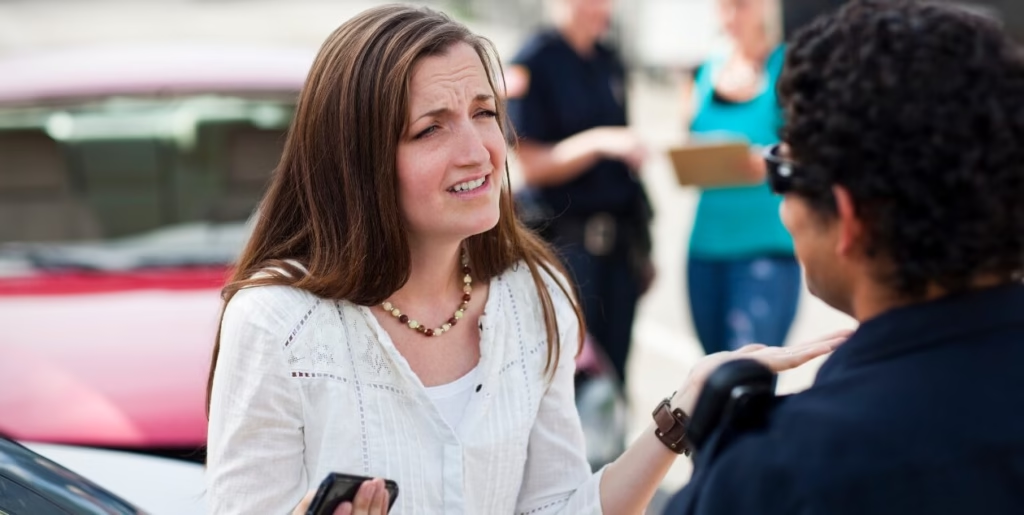
この記事を通じて、海外の交通事故現場で役立つ英語表現を一通り学びました。事故直後の安全確保から、警察官や相手運転手との情報交換、保険会社への請求手続きまで、全てのステップで使える英会話フレーズを習得したことで、緊急時への備えは万全です。交通事故は予期せぬ出来事ですが、適切な英語で冷静に対応することが、その後の保険や法的手続きをスムーズに進める鍵となります。
学習アドバイスと練習の重要性
ここで学んだ英語表現は、実際に声に出して練習することで、緊急時にパッと口から出てくるようになります。特に、“Are you hurt?”(怪我はありますか?)や”We need to exchange information.“(情報を交換する必要があります)といった基本フレーズは、反射的に言えるまで練習しましょう。家族や友人とロールプレイング形式で事故のシミュレーション**を行うことも、対応力を高めるのに非常に有効です。
アメリカにおける交通事故と文化的な補足
アメリカでの交通事故対応は、日本と異なるいくつかの文化や習慣があります。
- 銃社会と警察対応: アメリカでは、警察官に停車を求められた際や事故現場で、車から不用意に出たり、バッグやグローブボックスをむやみに探ったりする行為は非常に危険視されます。警察官の指示に従い、両手をハンドルなどの見える位置に置き、冷静に対応することが極めて重要です。
- 情報交換とDMV報告: 軽い事故でも、相手運転手とは名前、電話番号、保険会社名、ポリシーナンバー、免許番号などを必ず交換します。また、カリフォルニア州のように、人身事故や一定額以上の物損事故が発生した場合、警察が来ていてもいなくても、DMV(州交通局)に事故報告書(SRフォーム)を提出する義務がある州が多いです。自身の州のDMVの規則を事前に確認しておきましょう。
- 証拠保全: 損害の写真撮影や目撃者の連絡先確保は、保険請求や責任割合の決定において非常に重要と見なされます。現場を離れる前に、できる限りの証拠保全を行うことが、文化として根付いています。
これらの知識と英語表現を組み合わせることで、万が一の海外での交通事故にも自信を持って立ち向かえるはずです。あなたの海外運転が安全でありますように。
英語・英会話の基礎を学びたい方はこちらから! ↓

語彙力強化したい方はこちらから! ↓
